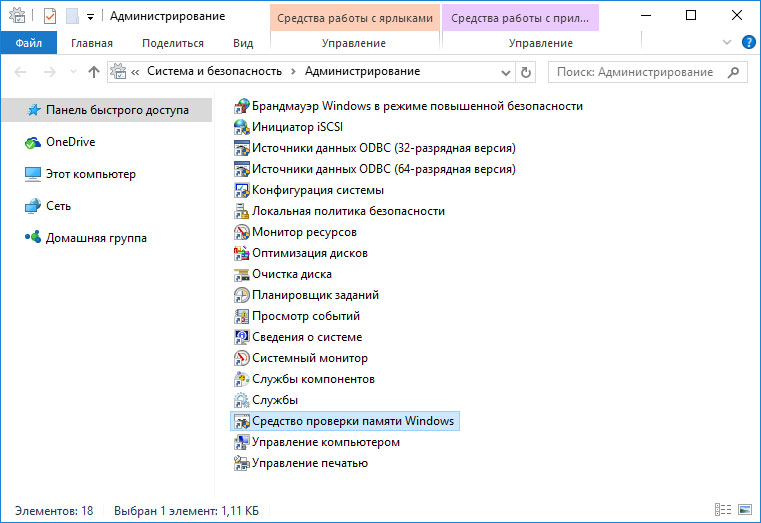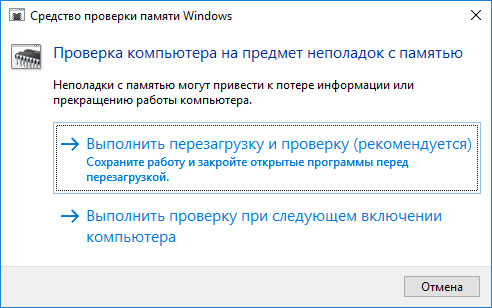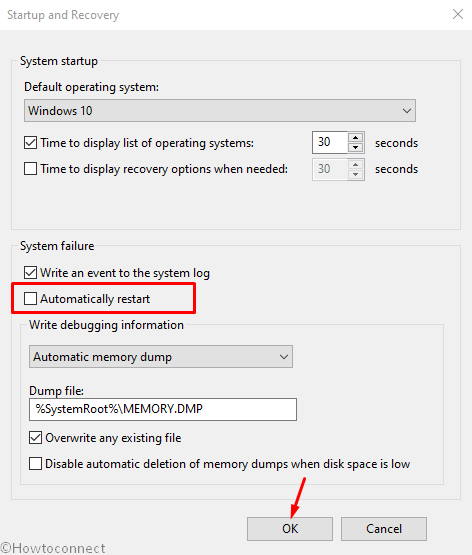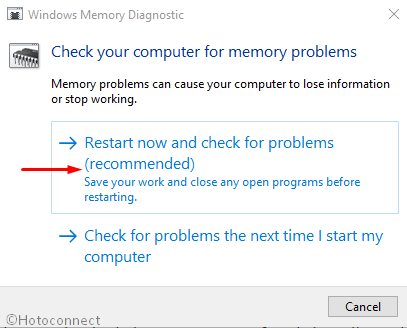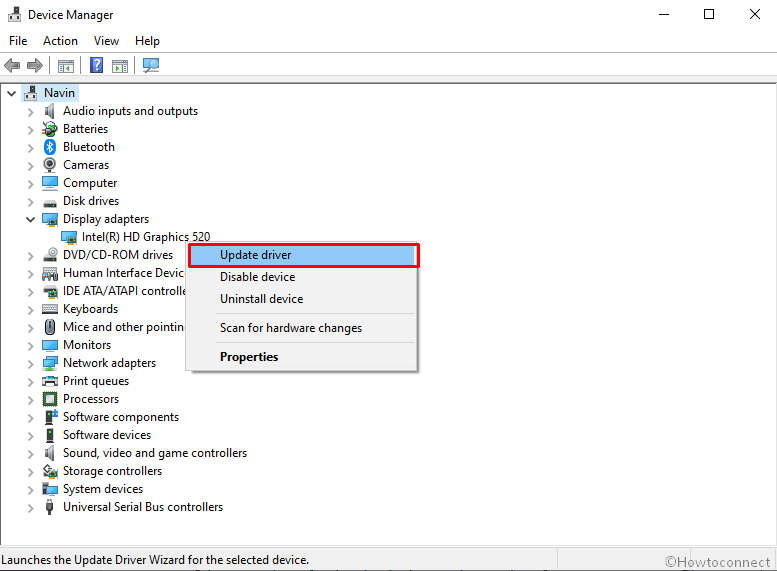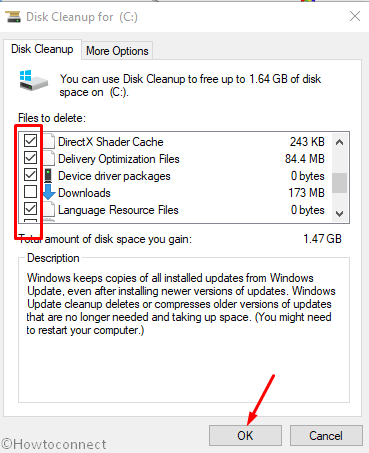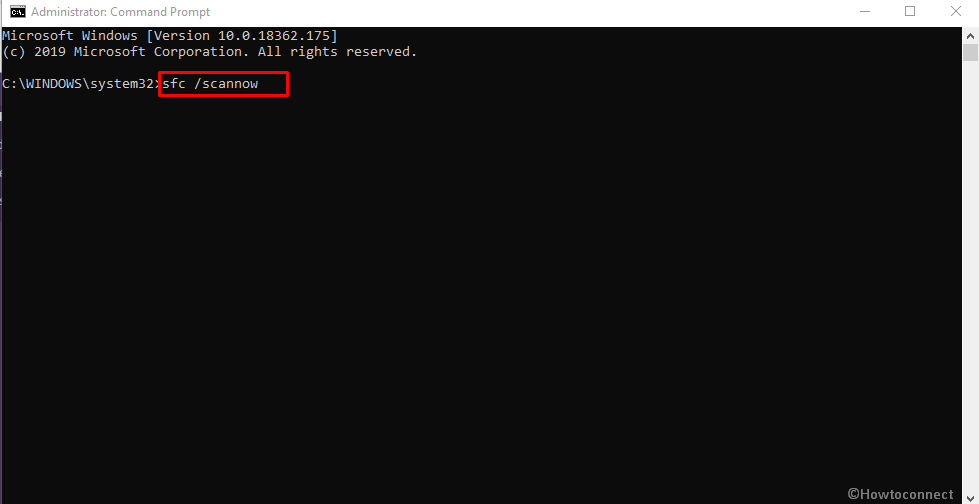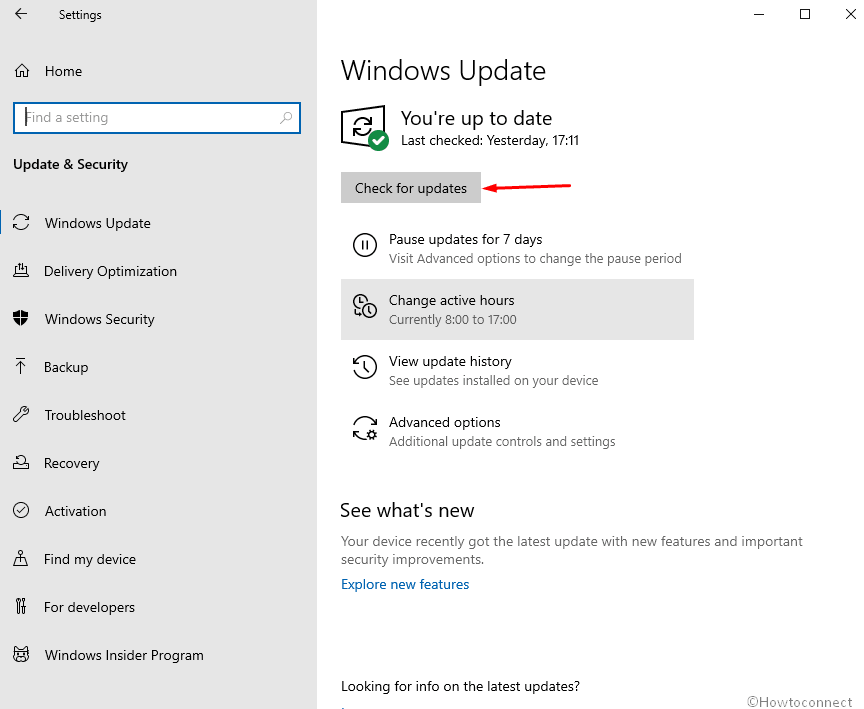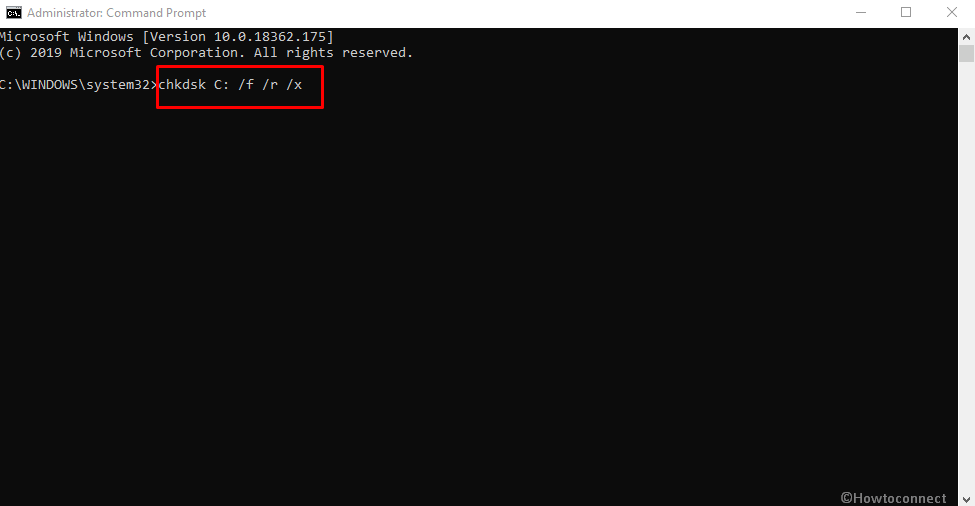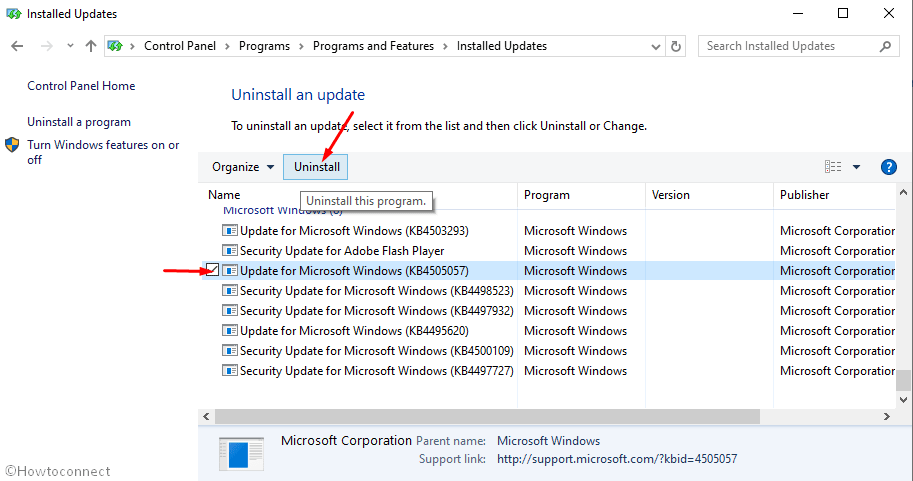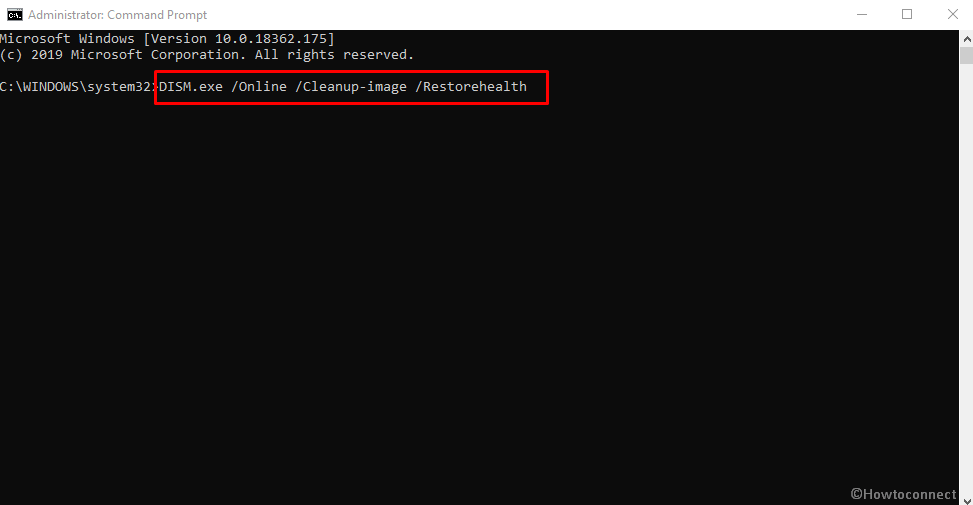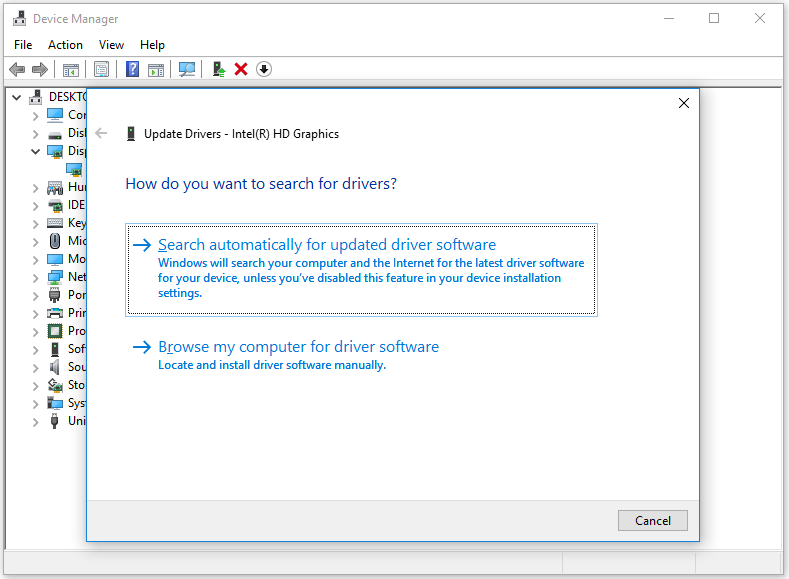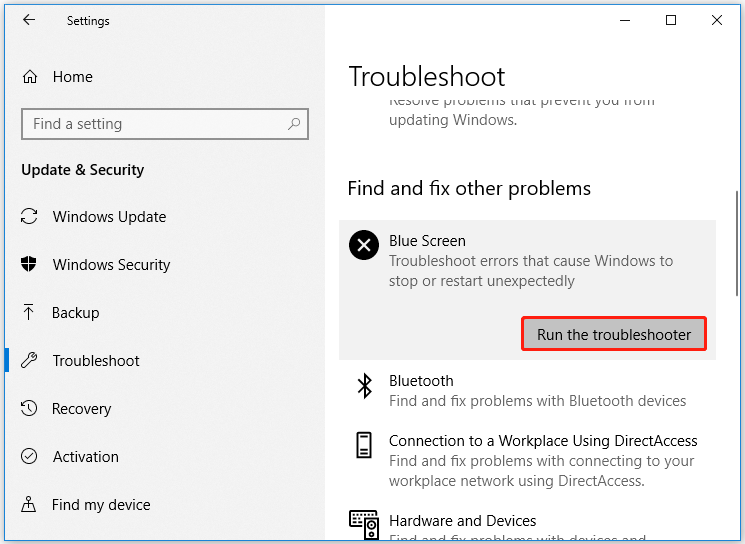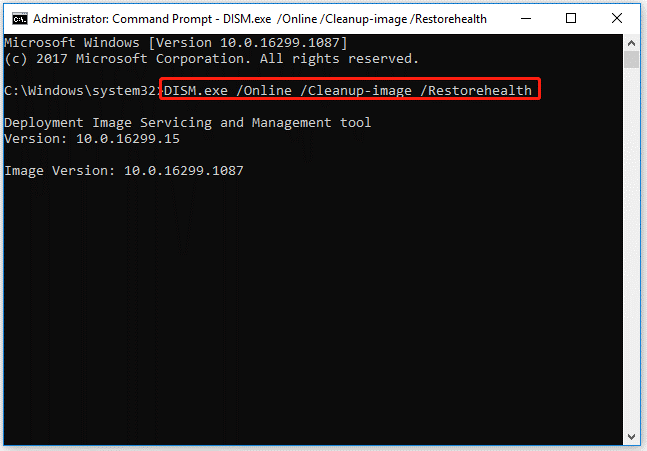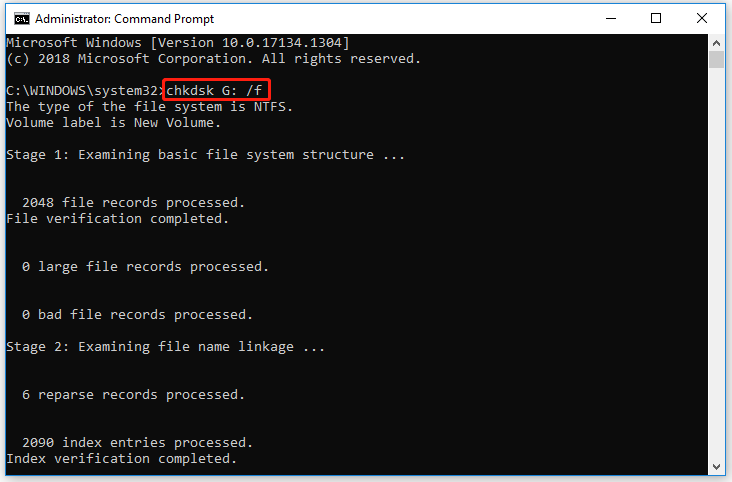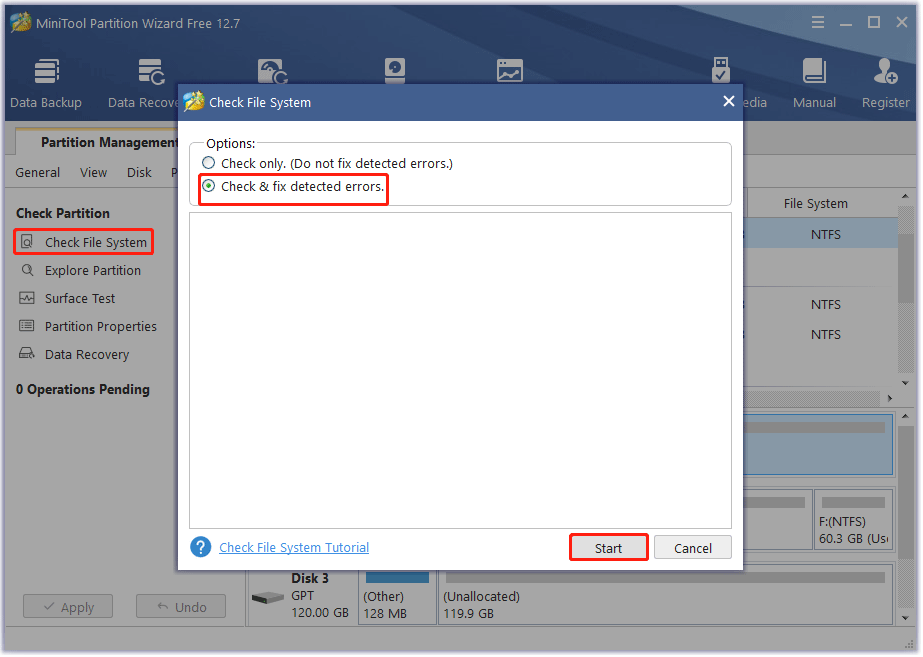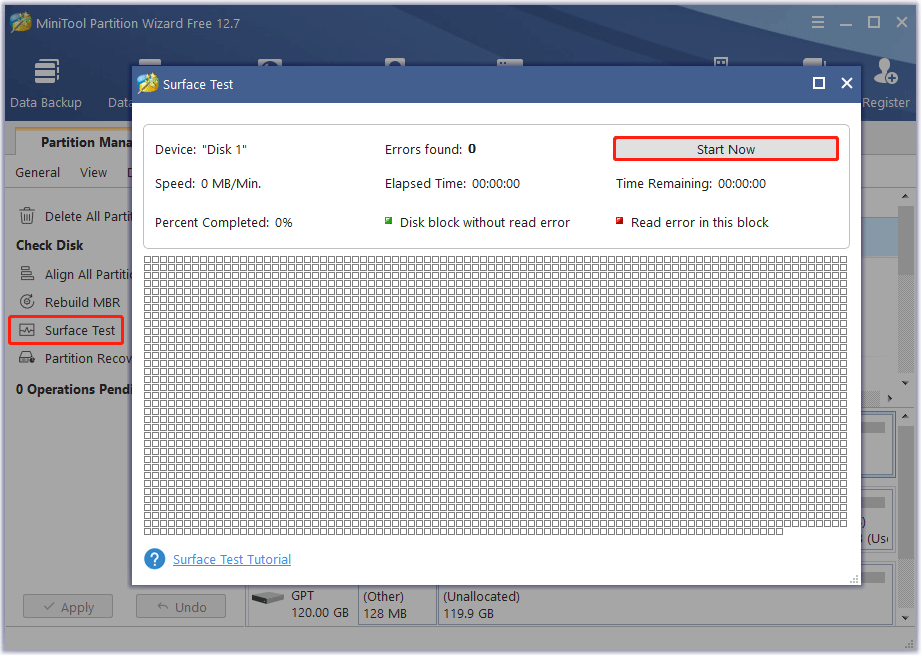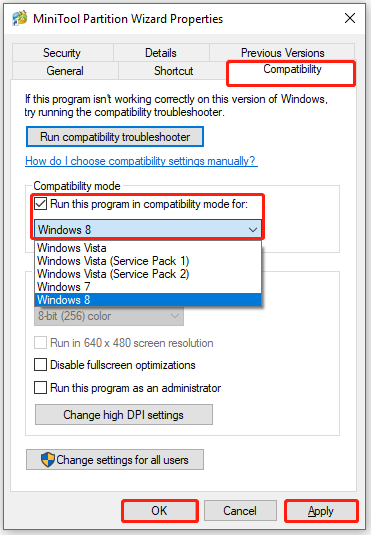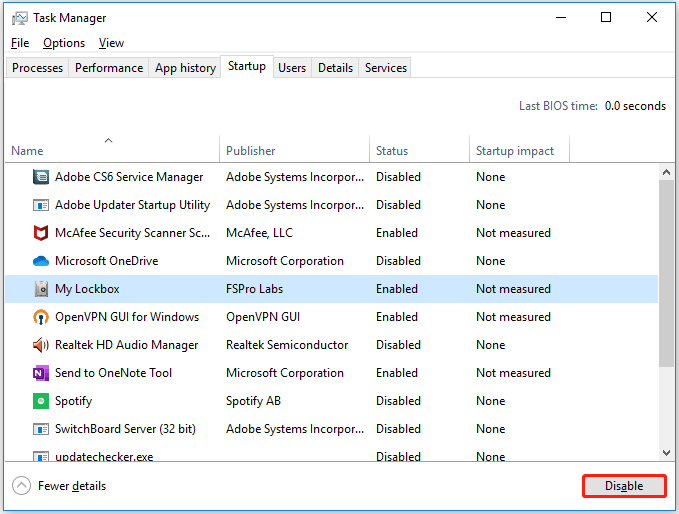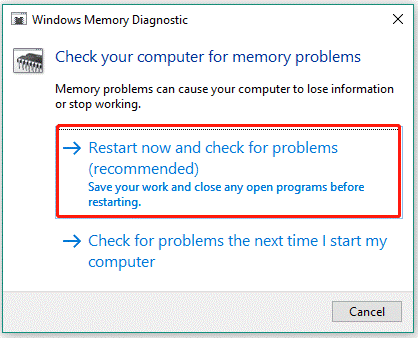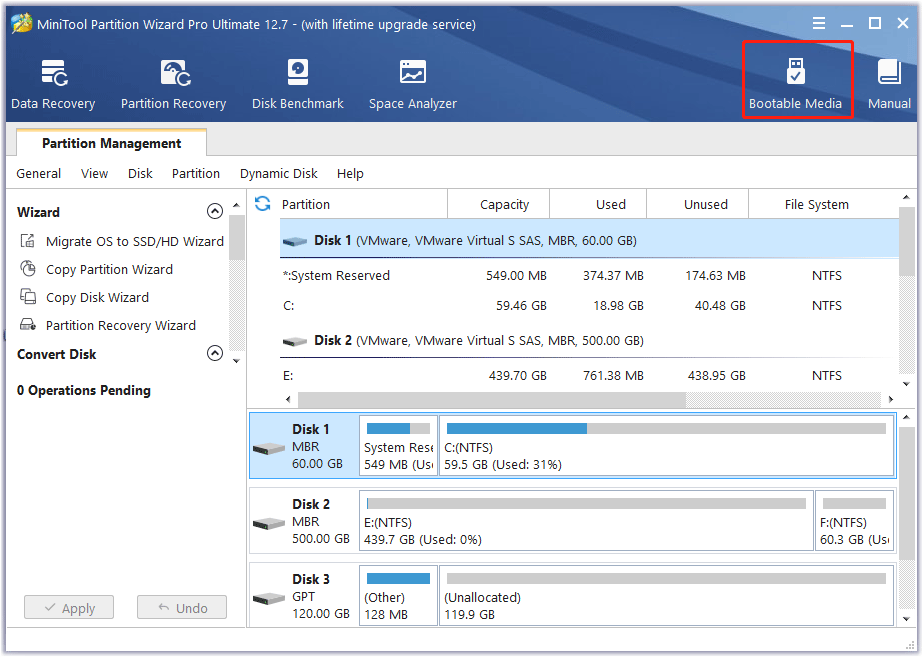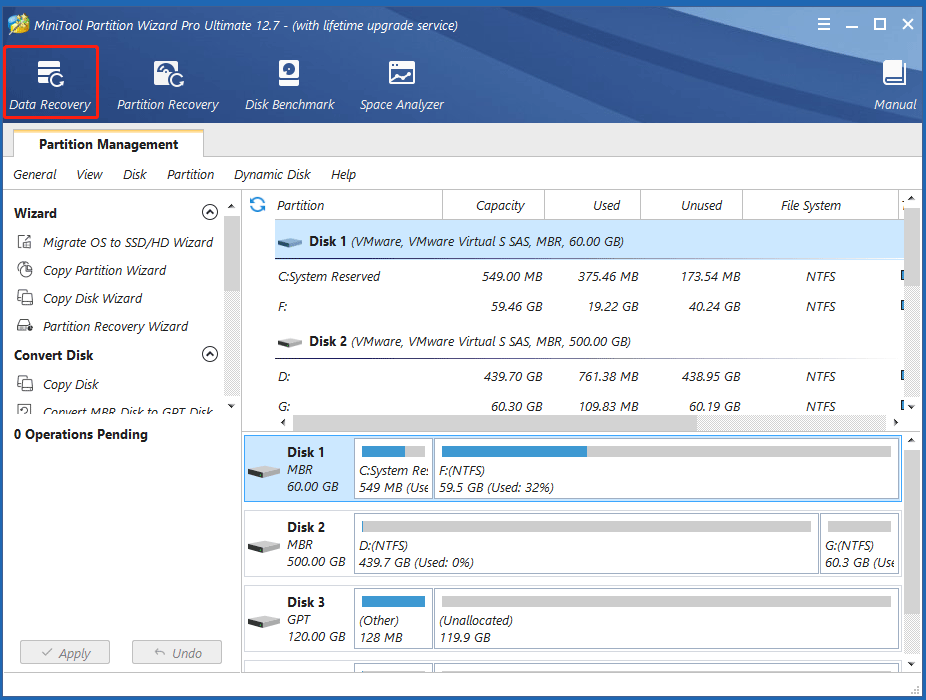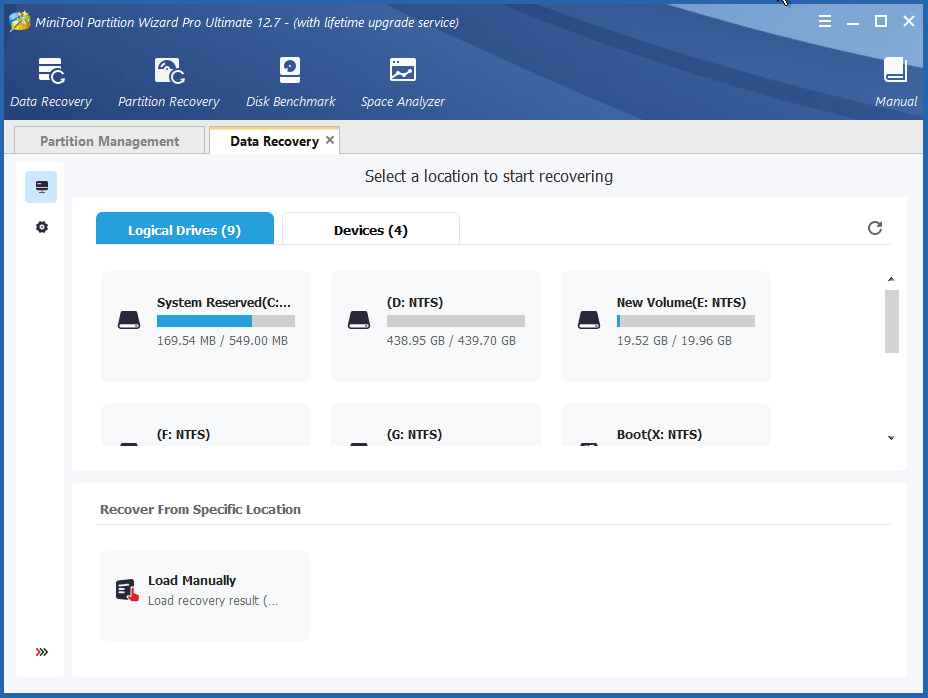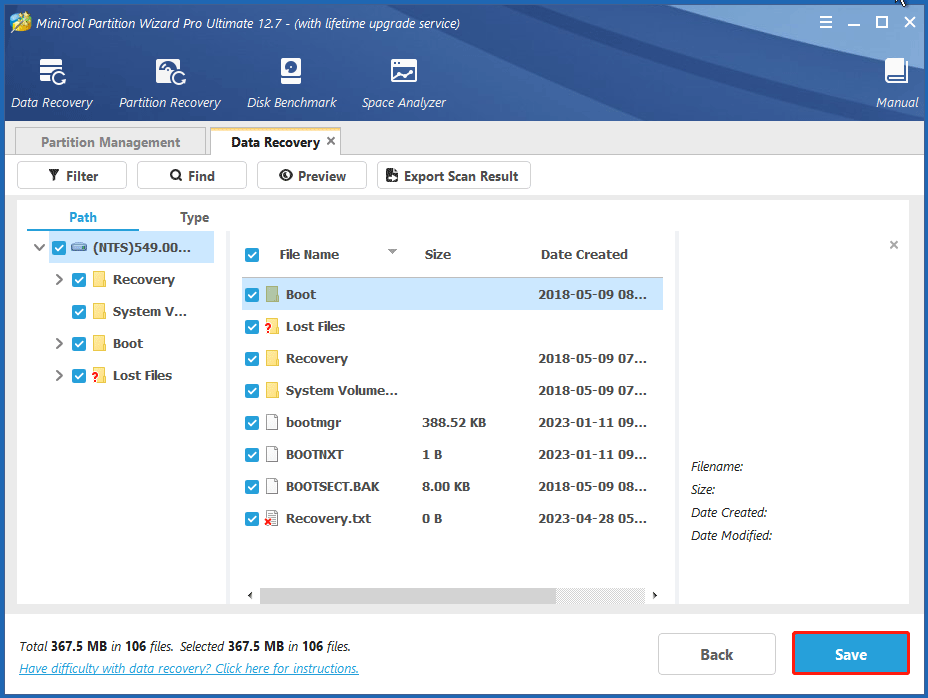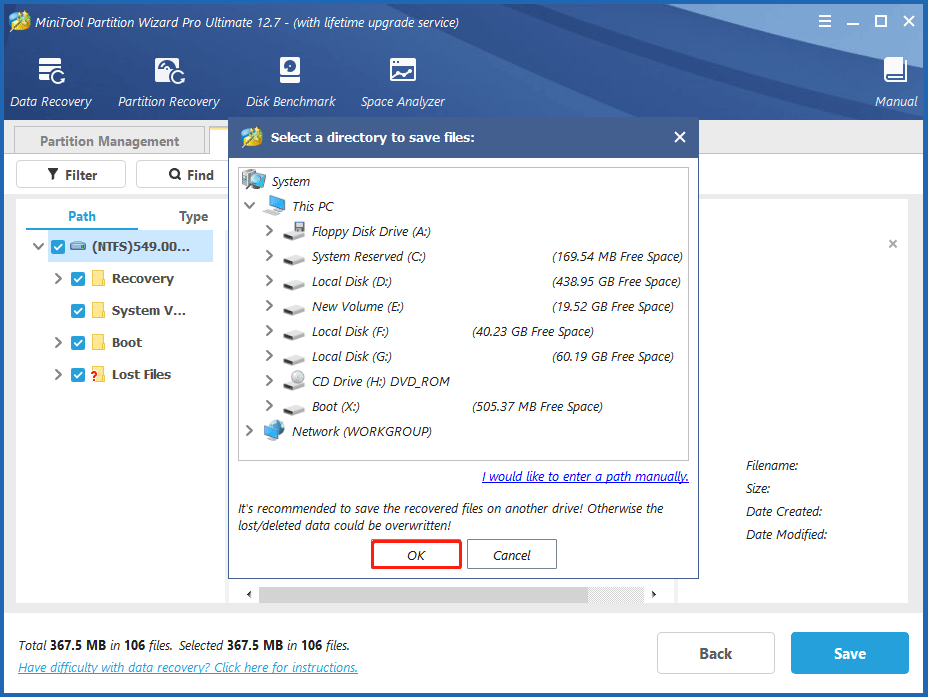Skip to content
Как убрать SESSION1_INITIALIZATION_FAILED (0x0000006D)?
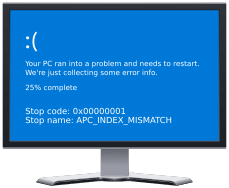
Как убрать « SESSION1_INITIALIZATION_FAILED» ( 0x0000006D)?
На компьютере или ноутбуке под управлением Windows появился «синий экран смерти»? После появления сообщения «
SESSION1_INITIALIZATION_FAILED» (
0x0000006D) система перезагружается? Ищите как исправить
0x0000006D: «
SESSION1_INITIALIZATION_FAILED»?
Как просмотреть информацию об ошибках, исправить ошибки в Windows 10, 8 или 7
Причины появления ошибки
- На жестком диске компьютера или ноутбука не достаточно места. Для правильной работы ОС Windows 10 на системном диске должно быть свободно 2 — 10 ГБ.
- На компьютер был установлен не совместимый BIOS или прошивка была повреждена.
- Установлены не совместимые с ОС драйвера устройств.
- Реестр Windows был поврежден или удален. Возможно в результате очистки были удалены системные ключи реестра.
- Ативирусное программное обеспечение или компьютерные вирусы могут заблокировать системные файлы или удалить важные ключи реестра.
- В результате ошибок в работе программы для резервного копирования.
- В результате обновления ОС Windows.
Актуально для ОС: Windows 10, Windows 8.1, Windows Server 2012, Windows 8, Windows Home Server 2011, Windows 7 (Seven), Windows Small Business Server, Windows Server 2008, Windows Home Server, Windows Vista, Windows XP, Windows 2000, Windows NT.
Вот несколько способов исправления ошибки «
SESSION1_INITIALIZATION_FAILED»:
Восстановите удаленные файлы
Часто появление BSoD ошибок приводит к утери важных файлов. Блокировка файлов компьютерными вирусами, ошибки в работе программ для резервного копирования, повреждение или перезапись системных файлов, ошибки файловой системы или наличие битых секторов диска – это не далеко полный список причин удаления данных.
Исправление соответствующих ошибок восстановит работоспособность устройства, но не всегда восстановит повреждённые или утерянные файлы. Не всегда имеется возможность устранить ту или иную ошибку без форматирования диска или чистой установки операционной системы, что также может повлечь за собой утерю файлов.
Загрузите бесплатно и просканируйте ваше устройство с помощью Hetman Partition Recovery. Ознакомьтесь с возможностями программы и пошаговой инструкцией.
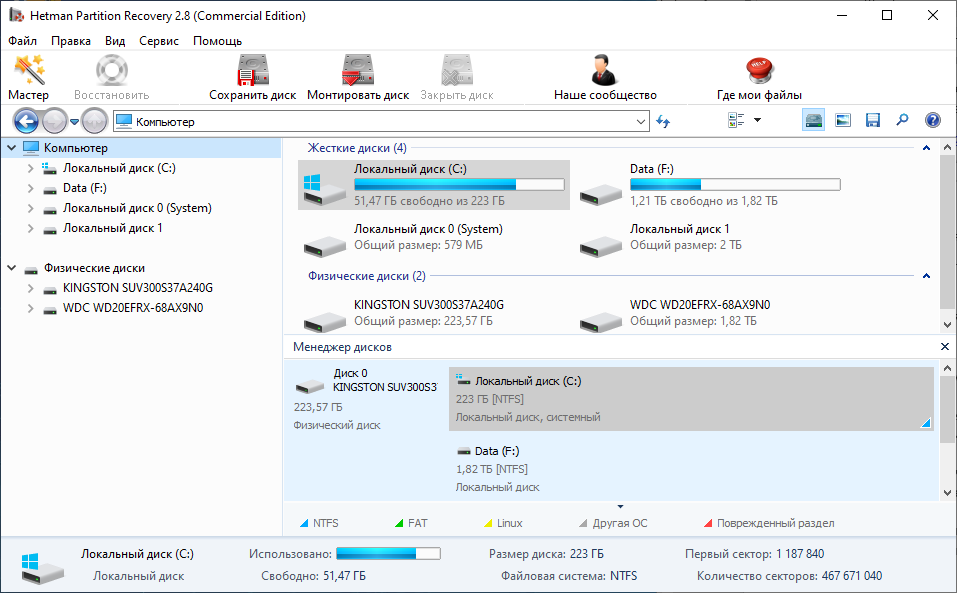
Программа для восстановления данных
Запустите компьютер в «безопасном режиме»
Если ошибка «SESSION1_INITIALIZATION_FAILED» (0x0000006D) возникает в момент загрузки Windows и блокирует любую возможность работы с системой, попробуйте включить компьютер в «безопасном режиме». Этот режим предназначен для диагностики операционной системы (далее ОС), но функционал Windows при этом сильно ограничен. «Безопасный режим» следует использовать только если работа с системой заблокирована.
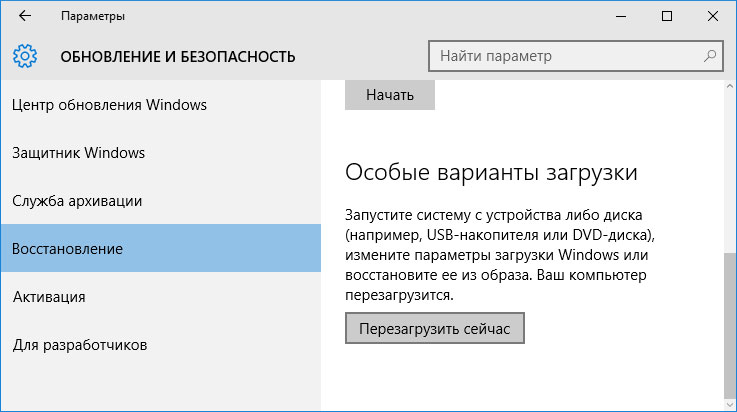
Чтобы запустить безопасный режим сделайте следующее:
- Перейдите в меню Пуск и выберите Параметры.
- В открывшемся окне параметров перейдите в меню Обновление и Безопасность и выберите раздел Восстановление.
- В разделе Восстановление найдите Особые варианты загрузки и нажмите кнопку Перезагрузить сейчас.
- После этого Windows перезагрузится и предложит выбрать следующее действие. Выберите Поиск и устранение неисправностей.
- В меню Поиск и устранение неисправностей кликните на Дополнительные параметры, далее — Параметры загрузки.
- Далее Windows уведомит вас о том, что компьютер можно перезагрузить с использованием дополнительных параметров загрузки. Укажите — Включить безопасный режим. Нажмите Перезагрузить.
- После перезагрузки выберите Включить безопасный режим нажав клавишу F4.
Как загрузить Windows в безопасном режиме
Обновите драйвер через Диспетчер устройств
Вы установили новое аппаратное обеспечение на компьютере? Возможно вы начали использовать новое USB-устройство с вашим компьютером. Это могло привести к ошибке «SESSION1_INITIALIZATION_FAILED». Если вы установили драйвер устройства используя диск, который поставляется вместе с ним, или использовали драйвер не c официального сайта Microsoft, то причина в нем. Вам придется обновить драйвер устройства, чтобы устранить эту проблему.

Вы можете сделать это вручную в диспетчере устройств Windows, для того выполните следующие инструкции:
- Нажмите кнопку Windows, затем введите диспетчер устройств с клавиатуры.
- Выберите Диспетчер устройств из списка.
- Просмотрите список категорий устройств, нажмите на стрелочку рядом с категорией вашего нового устройства. Драйвер может быть отмечен желтым треугольником.
- Кликните правой кнопкой мыши на имя устройства и нажмите Обновить драйвер.
- Далее откроется окно Мастера обновления драйверов с двумя опциями:
- Автоматический поиск обновленных драйверов. Windows проверит наличие наиболее подходящего драйвера для этого устройства в автоматическом режиме.
- Выполнить поиск драйверов на этом компьютере. Используйте эту опцию, что бы самостоятельно указать ОС файлы драйвера.
Перезагрузите компьютер после установки драйвера.
Используйте sfc /scannow для проверки всех файлов системы
Повреждение или перезапись системных файлов может привести к ошибке «SESSION1_INITIALIZATION_FAILED». Команда sfc находит поврежденные системные файлы Windows и заменяет их.
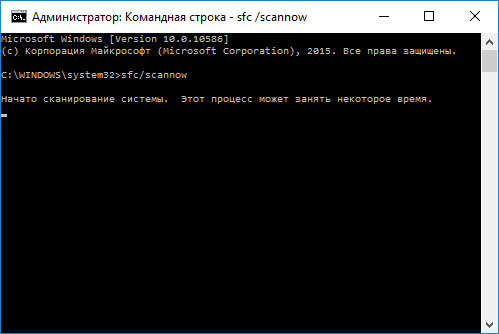
- Нажмите кнопку Windows, затем введите cmd с клавиатуры.
- Правой кнопкой мышки кликните на CMD и запустите от имени администратора.
- В окне командной строки введите sfc /scannow и нажмите Enter.
Этот процесс может занять несколько минут.
Как восстановить системные файлы Windows 10
Проверьте диск с Windows на наличие ошибок командой chkdsk c: /f
Возможно к синему экрану с «SESSION1_INITIALIZATION_FAILED» привела ошибка файловой системы или наличие битых секторов диска. Команда CHKDSK проверяет диск на наличие ошибок файловой системы и битых секторов. Использование параметра /f заставит программу автоматически исправлять найденные на диске ошибки, а параметр /r позволяет найти и «исправить» проблемные сектора диска. Для запуска следуйте инструкциям:
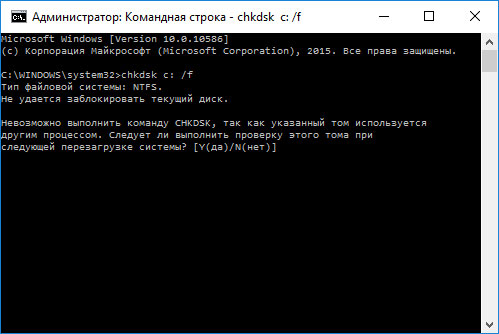
- Нажмите кнопку Windows, затем введите CMD с клавиатуры.
- Правой кнопкой мышки кликните на CMD и запустите от имени администратора.
- В окне командной строки введите chkdsk c: /f и нажмите Enter (используйте ту букву диска, на котором установлена ОС).
Дождитесь окончания процесса и перезагрузите компьютер.
Используйте режим совместимости со старой версией Windows
Отключите лишние программы из автозагрузки Windows
Программное обеспечение, вызывающее «SESSION1_INITIALIZATION_FAILED» (0x0000006D), может быть прописано в автозагрузку Windows и ошибка будет появляться сразу после запуска системы без вашего участия. Удалить программы из автозагрузки можно с помощью Диспетчера задач.
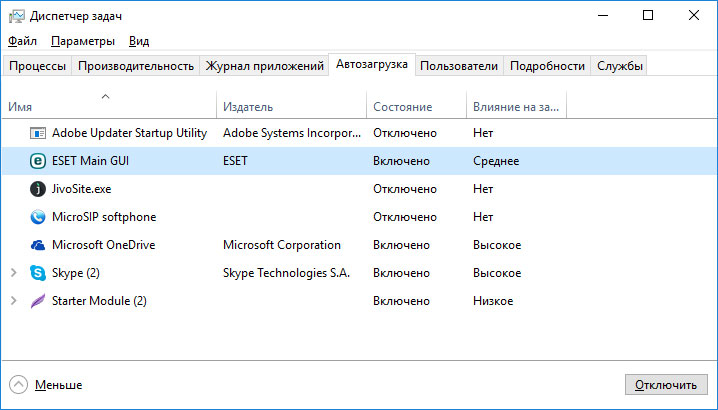
- Загрузитесь в Безопасном режиме.
- Кликните правой кнопкой мышки на Панели задач, затем на пункте Диспетчер задач.
- Перейдите на вкладку Автозагрузка.
- Чтобы убрать ту или иную программу из автозагрузки выберите её из списка и отключите, нажав кнопку Отключить в правом нижнем углу окна.
Обратитесь в поддержку Microsoft
Microsoft предлагает несколько решений удаления ошибки «голубого экрана». «SESSION1_INITIALIZATION_FAILED» (0x0000006D) можно убрать с помощью Центра обновления или обратившись в поддержку Windows.
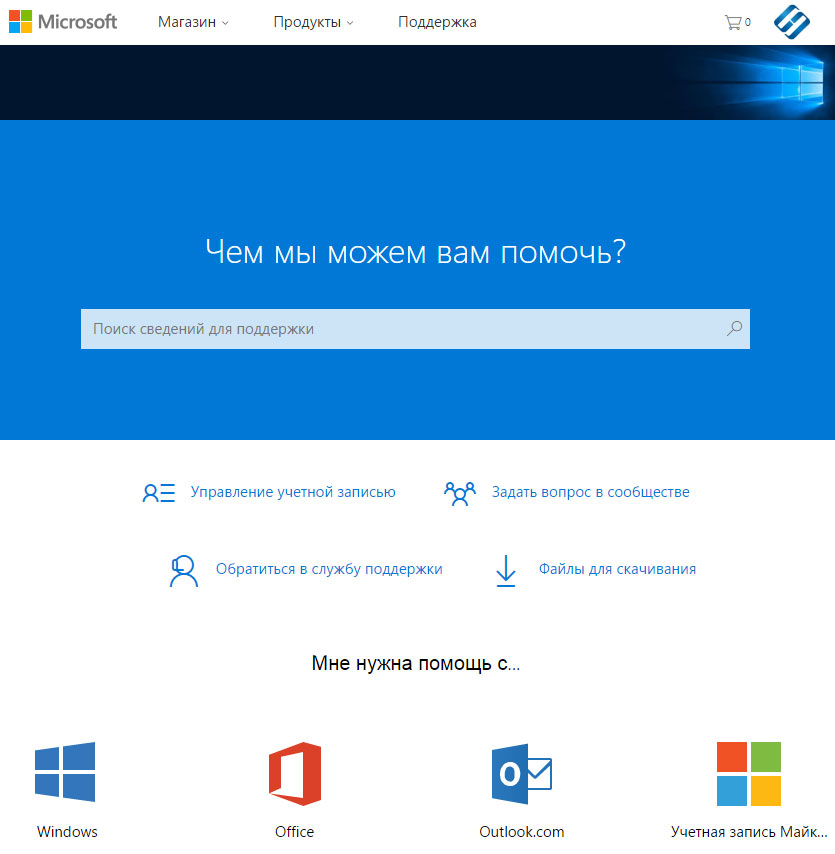
- Перейдите на сайт технической поддержки Microsoft.
- Введите код и сообщение об ошибке в поисковую строку и следуйте найденным рекомендациям.
- Если вы не найдете готового решения, то задайте вопрос в сообществе — возможно вам ответит сертифицированный системный администратор.
Установите последние обновления системы
С обновлениями Windows дополняет базу драйверов, исправляет ошибки и уязвимости в системе безопасности. Загрузите последние обновления, что бы избавиться от ошибки «SESSION1_INITIALIZATION_FAILED» (0x0000006D).
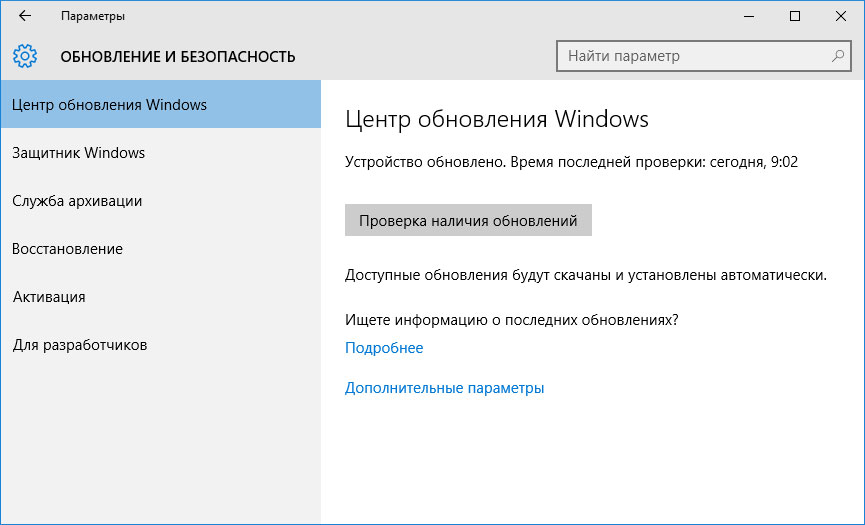
Запустить Центр обновления Windows можно следующим образом:
- Перейдите в меню Пуск и выберите Параметры.
- В окне Параметров перейдите в меню Обновление и Безопасность.
- Для установки последних обновлений Windows нажмите кнопку Проверка наличия обновлений и дождитесь окончания процесса их поиска и установки.
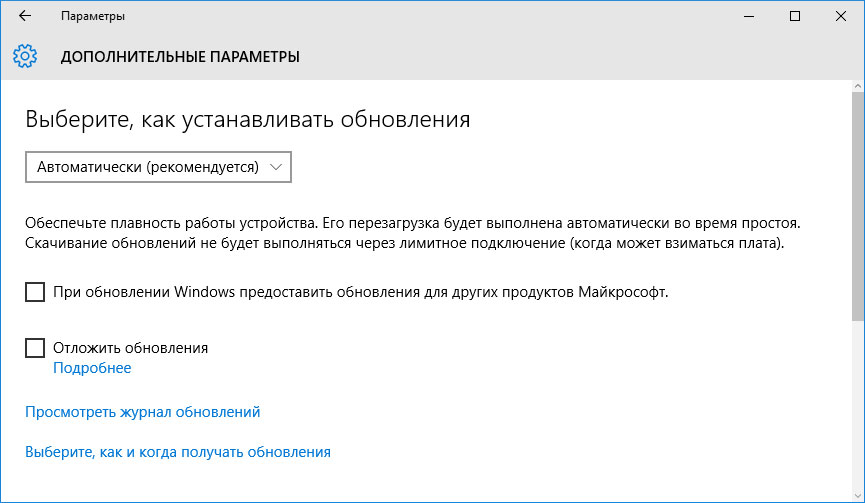
Рекомендуется настроить автоматическую загрузку и установку обновлений операционной системы с помощью меню Дополнительные параметры.
Чтобы включить автоматическое обновление системы необходимо запустить Центр обновления Windows:
- Перейдите в меню Пуск и выберите Параметры.
- В окне Параметров перейдите в меню Обновление и Безопасность и выберите подменю Центр обновления Windows. Для установки последних обновлений Windows нажмите кнопку Проверка наличия обновлений и дождитесь окончания процесса их поиска и установки.
- Перейдите в Дополнительные параметры и выберите, как устанавливать обновления — Автоматически.
Запустите проверку системы на вирусы
«Синий экран смерти» с ошибкой «SESSION1_INITIALIZATION_FAILED» 0x0000006D может вызывать компьютерный вирус, заразивший систему Windows.
Для проверки системы на наличие вирусов запустите установленную на компьютере антивирусную программу.

Современные антивирусы позволяют проверить как жесткие диски, так и оперативную память. Выполните полную проверку системы.
Выполните проверку оперативной памяти
Неполадки с памятью могут привести к ошибкам, потере информации или прекращению работы компьютера.
Прежде чем проверять оперативную память, отключите её из разъёма на материнской плате компьютера и повторно вставьте в него. Иногда ошибка SESSION1_INITIALIZATION_FAILED» вызвана неправильно или не плотно вставленной в разъём планкой оперативной памяти, или засорением контактов разъёма.
Если предложенные действия не привели к положительному результату, исправность оперативной памяти можно проверить средствами операционной системы, с помощью средства проверки памяти Windows.
Запустить средство проверки памяти Windows можно двумя способами:
- С помощью Панели управления:
Перейдите в Панель управления / Система и безопасность / Администрирование. Запустите приложение Средство проверки памяти Windows.
- С помощью средства Выполнить:
Запустите средство Выполнить с помощью комбинации клавиш Windows + R. Наберите mdsched и нажмите Enter. После чего откроется средство проверки Windows.
Для начала проверки выберите один из предлагаемых вариантов, проверка оперативной памяти в соответствии с которым будет запущена после перезагрузки компьютера.
Если в результате проверки будут определены ошибки, исправить которые не представляется возможным, то такую память необходимо заменить (замене подлежит модуль памяти с неполадками).
Выполните «чистую» установку Windows
Если не один из перечисленных методов не помог избавиться от SESSION1_INITIALIZATION_FAILED», попробуйте переустановить Windows. Для того чтобы выполнить чистую установку Windows необходимо создать установочный диск или другой носитель с которого планируется осуществление установки операционной системы.
Загрузите компьютер из установочного диска. Для этого может понадобиться изменить устройство загрузки в BIOS или UEFI для более современных компьютеров.
Следуя пунктам меню установщика укажите диск, на который вы хотите установить Windows. Для этого понадобится отформатировать его. Если вас не устраивает количество или размер локальных дисков, их можно полностью удалить и заново перераспределить.
Помните, что форматирование, удаление или перераспределения дисков удалит все файлы с жесткого диска.
После указания диска для установки Windows запуститься процесс копирования системных файлов и установки операционной системы. Во время установки от вас не потребуется дополнительных действий. В течении установки экран компьютера будет несколько раз гаснуть на непродолжительное время, и для завершения некоторых этапов установки компьютер будет самостоятельно перезагружаться.
В зависимости от версии Windows на одном из этапов от вас может понадобиться выбрать или внести базовые параметры персонализации, режим работы компьютера в сети, а также параметры учётной записи или создать новую.
После загрузки рабочего стола чистую установку Windows можно считать законченной.
Примечание. Прежде чем приступить к выполнению чистой установки Windows заранее побеспокойтесь о наличии драйверов ко всем установленным устройствам и сохранности ваших файлов. Загрузите и сохраните драйвера на отдельный носитель информации, а для важных данных создайте резервную копию.
Как сбросить Windows 10 к исходному состоянию
Как сбросить Windows 10, 8, 7 если компьютер не загружается
BSOD or Blue Screen of Death occurs on Windows when there is some serious hardware, driver or software problem. BSOD session 1 initialization failed error is the one such BSOD that typically appears while starting the PC, upgrading the OS to the latest version or casually doing routine work on Windows 10.
Most commonly, the BSOD error occurs when the initialization of the I/O system failed or when there are some issues with the hardware components on the PC. This could result in system corruption and therefore it is crucial to fix the error soon.
Possible workarounds of BSOD session 1 initialization failed error
Below we have provided the possible workarounds to this BSOD error on your system:
Repair Corrupted files – to avoid BSOD caused due to damaged system files, try the below steps that would repair or restore them:
- Open Command Prompt as admin,
- For that, go to the Start menu and simply search for CMD and hit Enter,
- Right-click on the Command Prompt on the search result page and select Run as Administrator,
- Once the Command Prompt Window, type the below commands and hit Enter on each time:
“DISM.exe /Online /Cleanup-image /Restorehealth”
“sfc /scannow”
Repair Hard Drive Errors – if the problem continues, you should run a hard driver repair mechanism from the below steps to remove the possible cause of the error:
- Open Command Prompt by the mentioned above,
- On the Command line, type chkdsk/r C: and hit Enter,
- Run the check disk command for rest of the available disk drivers,
- Once done, check and confirm if the problem is resolved.
Run Malware Scan – Sometimes malware infection can cause BSOD error. To check the system for possible virus infection, follow the following steps: Windows Security> Virus and Threat Protection> Quick Scan.
Update Windows: BSOD error could be caused when you are running an outdated Windows version. So, you should update your Windows to the latest version and see if this provides you the fix. Open Settings> Update & Security> Windows Update> Check for Updates.
Update Drivers: in case, you have updated your Windows OS, an old driver could start causing conflict with the new OS which might be the reason for bsod session 1 initialization failed error. You should consider of updating the particular device driver to fix the issue:
Open Device Manager> Expand Display Adapters> Select Device> Right-click on it and finally select Update Driver Software. Alternatively, use the below automatic driver updating tool to download and install the outdated drivers on your system easily and automatically.
Unplug Extra Hardware: Try with removing any external storage devices like drivers, docks or any other hardware that are currently not in use.
If the problem continues, we recommend you check the below recommended solutions collected from through online research and user feedback:
Solution 1: Run Windows Built-in BSOD Troubleshooter
Try the Windows 10’s built-in BSOD Troubleshooter if none of the above workarounds work in your case. This is especially designed tool to check for various system issues including BSOD errors. It does not only analyze Windows and its components only but also the Motherboard BIOS and its firmware. Follow the below steps:
- From the Start menu, click on Settings> Update & Security,
- Go to the Troubleshoot> Additional Troubleshooters,
- Now, click on Blue Screen> Run the Troubleshooter,
- Follow the on-screen instructions to complete the troubleshooting process.
The BSOD troubleshooter will indicate the root cause of the error whether it is software or hardware problem and automatically resolve the things. This process may take a few minutes and therefore just wait till it gets finished.
Solution 2: Rebuild MBR & BCD
MBR or Master Boot Record is a key part of the system startup. It contains all essential information regarding the disk partitions of computer and helps in loading process. If it is not functional on your PC, you may encounter BSOD error.
BCD or Boot Configuration Data on the other hand contains the boot configuration parameters on how to start an OS. Rebuilding the MBR and BCD will help in starting the PC normally without any error. Follow the below steps for doing the same:
- Click on Start menu, select Power icon and then click on Restart option while holding shift key to enter Windows Startup Repair Windows after system boots up,
- Click on the Troubleshoot option and click on Advanced,
- Select Command Prompt and type the below commands and press Enter on each time:
bootrec /fixmbr
bootrec /fixboot
bcdedit /export c:\bcdbackup
attrib c:\boot\bcd -h -r -s
ren c:\boot\bcd bcd.old
bootrec /rebuildbcd and then y
exit
- Restart your device once done and check the next if bsod session 1 initialization failed error is resolved.
Solution 3: Restore/ Reset PC
If the problem remains, you can consider the option of restoring the PC or resetting it. Restoring the PC is possible only when you have System Restore Point for your PC. You have to reset your PC if you haven’t created one. A reset will remove the corrupted or problematic copy of Windows from your device and replace it with a fresh copy of Windows. It will wipe out all programs and apps, reinstall Windows along with the built-in Windows apps. If you have System Restore point, follow the below steps to restore the PC to the previous working condition:
- Enter Windows Startup Repair page from the previous steps,
- In the list of the options appear, click on Troubleshoot> Advanced options> System Restore,
- Select your Microsoft Account, choose your keyboard layout from the given options and then click on Continue,
- Click on Next on the pop-up appears the then and select the then your Latest System Restore point from the given options and click Next again,
- Confirm the action by clicking ‘Yes’ option on the page appears the next to restore the PC to the previous state right when the respective System restore Point was created,
- Restart your computer normally and you no longer will receive the BSOD error.
However, if you do not have any System Restore point, you would have to reset your PC. Go to the Windows Startup Repair Options> Troubleshoot> click on Reset this PC option. You are then provided with two options, Keep my files and Remove everything.
- Choose the one, select your Account and type in your password,
- Click Continue and finally click Reset option to reset Windows 10,
- Once the PC is successfully reset, your problem should be permanently fixed.
If none of the method work, we recommend you use PC Repair Tool to check for other possible Windows related issues to get their automatic fix. You can use this as an automatic tool to deal with the issue if you do not want to go with the lengthy manual fixes.
Conclusion
This is all about how to fix bsod session 1 initialization failed. Hope so, these methods surely help your case to resolve the problem. Comment down below and tell us which particular solution works in your case. The comment box is always open for any new recommendations, queries and questions regarding the post.
Содержание
- Причины появления ошибки
- Восстановите удаленные файлы
- Запустите компьютер в «безопасном режиме»
- Обновите драйвер через Диспетчер устройств
- Используйте sfc /scannow для проверки всех файлов системы
- Проверьте диск с Windows на наличие ошибок командой chkdsk c: /f
- Используйте режим совместимости со старой версией Windows
- Отключите лишние программы из автозагрузки Windows
- Обратитесь в поддержку Microsoft
- Установите последние обновления системы
- Запустите проверку системы на вирусы
- Выполните проверку оперативной памяти
- Выполните «чистую» установку Windows
Причины появления ошибки
-
На жестком диске компьютера или ноутбука не достаточно места. Для правильной работы ОС Windows 10 на системном диске должно быть свободно 2 — 10 ГБ.
-
На компьютер был установлен не совместимый BIOS или прошивка была повреждена.
-
Установлены не совместимые с ОС драйвера устройств.
-
Реестр Windows был поврежден или удален. Возможно в результате очистки были удалены системные ключи реестра.
-
Ативирусное программное обеспечение или компьютерные вирусы могут заблокировать системные файлы или удалить важные ключи реестра.
-
В результате ошибок в работе программы для резервного копирования.
-
В результате обновления ОС Windows.
Читайте подробней как исправить 0x0000006D: «SESSION1_INITIALIZATION_FAILED» в Windows 11, Windows 10, Windows 8.1, Windows Server 2012, Windows 8, Windows Home Server 2011, Windows 7 (Seven), Windows Small Business Server, Windows Server 2008, Windows Home Server, Windows Vista, Windows XP, Windows 2000, Windows NT.
Вот несколько способов исправления ошибки «SESSION1_INITIALIZATION_FAILED»:
Восстановите удаленные файлы
Часто появление BSoD ошибок приводит к утери важных файлов. Блокировка файлов компьютерными вирусами, ошибки в работе программ для резервного копирования, повреждение или перезапись системных файлов, ошибки файловой системы или наличие битых секторов диска – это не далеко полный список причин удаления данных.
Исправление соответствующих ошибок восстановит работоспособность устройства, но не всегда восстановит повреждённые или утерянные файлы. Не всегда имеется возможность устранить ту или иную ошибку без форматирования диска или чистой установки операционной системы, что также может повлечь за собой утерю файлов.
Инструмент восстанавливает файлы с любых устройств, независимо от причины потери данных.
Загрузите бесплатно и просканируйте ваше устройство с помощью Hetman Partition Recovery. Ознакомьтесь с возможностями программы и пошаговой инструкцией.
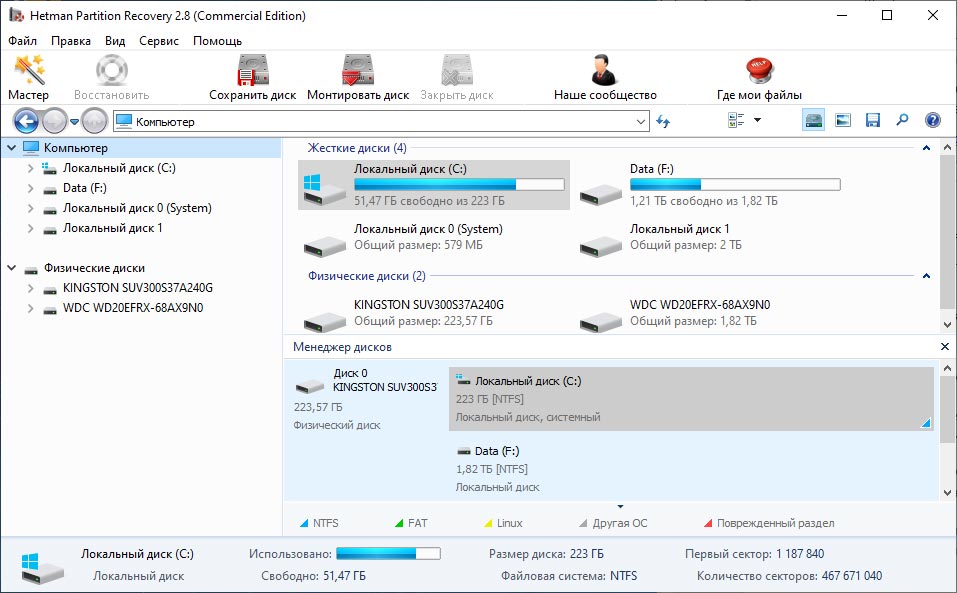
Запустите компьютер в «безопасном режиме»
Если ошибка «SESSION1_INITIALIZATION_FAILED» (0x0000006D) возникает в момент загрузки Windows и блокирует любую возможность работы с системой, попробуйте включить компьютер в «безопасном режиме». Этот режим предназначен для диагностики операционной системы (далее ОС), но функционал Windows при этом сильно ограничен. «Безопасный режим» следует использовать только если работа с системой заблокирована.

Чтобы запустить безопасный режим сделайте следующее:
-
Перейдите в меню Пуск и выберите Параметры.
-
В открывшемся окне параметров перейдите в меню Обновление и Безопасность и выберите раздел Восстановление.
-
В разделе Восстановление найдите Особые варианты загрузки и нажмите кнопку Перезагрузить сейчас.
-
После этого Windows перезагрузится и предложит выбрать следующее действие. Выберите Поиск и устранение неисправностей.
-
В меню Поиск и устранение неисправностей кликните на Дополнительные параметры, далее — Параметры загрузки.
-
Далее Windows уведомит вас о том, что компьютер можно перезагрузить с использованием дополнительных параметров загрузки. Укажите — Включить безопасный режим. Нажмите Перезагрузить.
-
После перезагрузки выберите Включить безопасный режим нажав клавишу F4.
Перейти к просмотру
Как загрузить Windows 10, 8 или 7 в безопасном режиме, как отключить безопасный режим
Обновите драйвер через Диспетчер устройств
Вы установили новое аппаратное обеспечение на компьютере? Возможно вы начали использовать новое USB-устройство с вашим компьютером. Это могло привести к ошибке «SESSION1_INITIALIZATION_FAILED». Если вы установили драйвер устройства используя диск, который поставляется вместе с ним, или использовали драйвер не c официального сайта Microsoft, то причина в нем. Вам придется обновить драйвер устройства, чтобы устранить эту проблему.

Вы можете сделать это вручную в диспетчере устройств Windows, для того выполните следующие инструкции:
-
Нажмите кнопку Windows, затем введите диспетчер устройств с клавиатуры.
-
Выберите Диспетчер устройств из списка.
-
Просмотрите список категорий устройств, нажмите на стрелочку рядом с категорией вашего нового устройства. Драйвер может быть отмечен желтым треугольником.
-
Кликните правой кнопкой мыши на имя устройства и нажмите Обновить драйвер.
-
Далее откроется окно Мастера обновления драйверов с двумя опциями:
-
Автоматический поиск обновленных драйверов. Windows проверит наличие наиболее подходящего драйвера для этого устройства в автоматическом режиме.
-
Выполнить поиск драйверов на этом компьютере. Используйте эту опцию, что бы самостоятельно указать ОС файлы драйвера.
-
Перезагрузите компьютер после установки драйвера.
Используйте sfc /scannow для проверки всех файлов системы
Повреждение или перезапись системных файлов может привести к ошибке «SESSION1_INITIALIZATION_FAILED». Команда sfc находит поврежденные системные файлы Windows и заменяет их.

-
Нажмите кнопку Windows, затем введите cmd с клавиатуры.
-
Правой кнопкой мышки кликните на CMD и запустите от имени администратора.
-
В окне командной строки введите sfc /scannow и нажмите Enter.
Этот процесс может занять несколько минут.
Перейти к просмотру
Как восстановить системные файлы Windows 10, 8, 7 (SFC, DISM)
Проверьте диск с Windows на наличие ошибок командой chkdsk c: /f
Возможно к синему экрану с «SESSION1_INITIALIZATION_FAILED» привела ошибка файловой системы или наличие битых секторов диска. Команда CHKDSK проверяет диск на наличие ошибок файловой системы и битых секторов. Использование параметра /f заставит программу автоматически исправлять найденные на диске ошибки, а параметр /r позволяет найти и «исправить» проблемные сектора диска. Для запуска следуйте инструкциям:

-
Нажмите кнопку Windows, затем введите CMD с клавиатуры.
-
Правой кнопкой мышки кликните на CMD и запустите от имени администратора.
-
В окне командной строки введите chkdsk c: /f и нажмите Enter (используйте ту букву диска, на котором установлена ОС).
Дождитесь окончания процесса и перезагрузите компьютер.
Используйте режим совместимости со старой версией Windows
BSOD с кодом «SESSION1_INITIALIZATION_FAILED» может вызывать «устаревшее» программное обеспечение. Если ошибка появляется после запуска программы, то использование режима совместимости Windows избавит от появления ошибки. Для устранения проблемы следуйте следующим инструкциям:
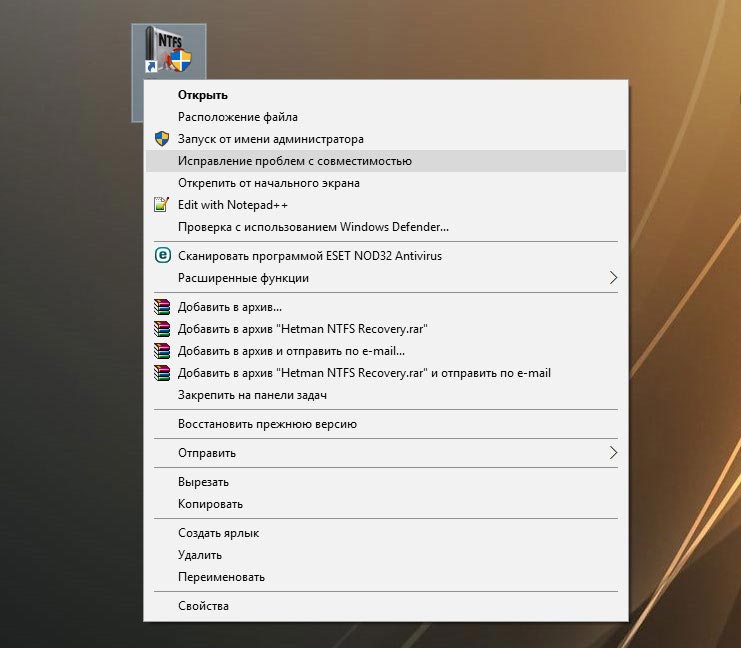
-
Найдите исполняемый файл программы, он имеет расширение .exe и кликните на нем правой кнопкой мышки.
-
В контекстном меню укажите Исправление проблем с совместимостью.
-
На следующем шаге появится окно Устранения проблем с совместимостью. Вам будет доступно два режима диагностики:
-
Использовать рекомендованные параметры. Выберите этот вариант для тестового запуска программы с использованием рекомендуемых параметров совместимости.
-
Диагностика программы. Выберите этот вариант для выбора параметров совместимости на основе замеченных проблем.
-
-
После тестирования c различными версиями Windows и параметрами запуска сохраните параметры для программы.
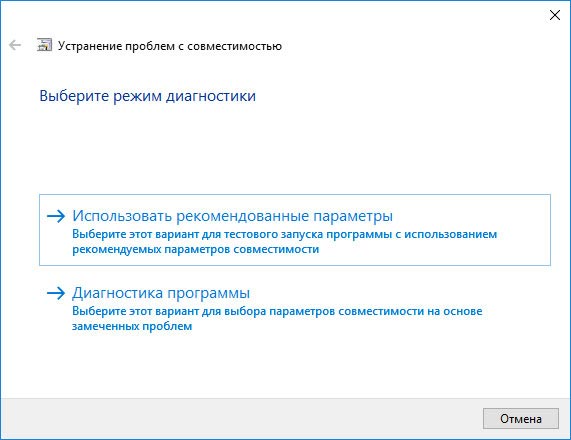
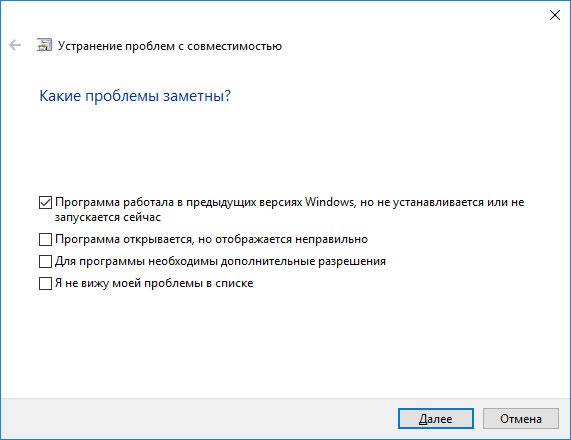
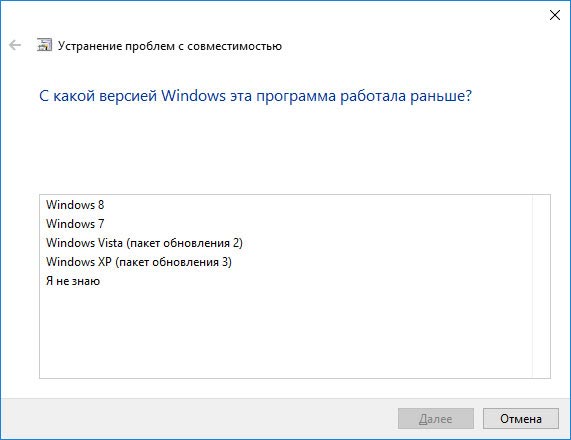
Перейти к просмотру
Запуск программы, или драйвера в режиме совместимости Windows 10, 8, 7
Отключите лишние программы из автозагрузки Windows
Программное обеспечение, вызывающее «SESSION1_INITIALIZATION_FAILED» (0x0000006D), может быть прописано в автозагрузку Windows и ошибка будет появляться сразу после запуска системы без вашего участия. Удалить программы из автозагрузки можно с помощью Диспетчера задач.

-
Загрузитесь в Безопасном режиме.
-
Кликните правой кнопкой мышки на Панели задач, затем на пункте Диспетчер задач.
-
Перейдите на вкладку Автозагрузка.
-
Чтобы убрать ту или иную программу из автозагрузки выберите её из списка и отключите, нажав кнопку Отключить в правом нижнем углу окна.
Обратитесь в поддержку Microsoft
Microsoft предлагает несколько решений удаления ошибки «голубого экрана». «SESSION1_INITIALIZATION_FAILED» (0x0000006D) можно убрать с помощью Центра обновления или обратившись в поддержку Windows.

-
Перейдите на сайт технической поддержки Microsoft.
-
Введите код и сообщение об ошибке в поисковую строку и следуйте найденным рекомендациям.
-
Если вы не найдете готового решения, то задайте вопрос в сообществе — возможно вам ответит сертифицированный системный администратор.
Установите последние обновления системы
С обновлениями Windows дополняет базу драйверов, исправляет ошибки и уязвимости в системе безопасности. Загрузите последние обновления, что бы избавиться от ошибки «SESSION1_INITIALIZATION_FAILED» (0x0000006D).

Запустить Центр обновления Windows можно следующим образом:
-
Перейдите в меню Пуск и выберите Параметры.
-
В окне Параметров перейдите в меню Обновление и Безопасность.
-
Для установки последних обновлений Windows нажмите кнопку Проверка наличия обновлений и дождитесь окончания процесса их поиска и установки.

Рекомендуется настроить автоматическую загрузку и установку обновлений операционной системы с помощью меню Дополнительные параметры.
Чтобы включить автоматическое обновление системы необходимо запустить Центр обновления Windows:
-
Перейдите в меню Пуск и выберите Параметры.
-
В окне Параметров перейдите в меню Обновление и Безопасность и выберите подменю Центр обновления Windows. Для установки последних обновлений Windows нажмите кнопку Проверка наличия обновлений и дождитесь окончания процесса их поиска и установки.
-
Перейдите в Дополнительные параметры и выберите, как устанавливать обновления — Автоматически.
Запустите проверку системы на вирусы
«Синий экран смерти» с ошибкой «SESSION1_INITIALIZATION_FAILED» 0x0000006D может вызывать компьютерный вирус, заразивший систему Windows.
Для проверки системы на наличие вирусов запустите установленную на компьютере антивирусную программу.

Современные антивирусы позволяют проверить как жесткие диски, так и оперативную память. Выполните полную проверку системы.
Выполните проверку оперативной памяти
Неполадки с памятью могут привести к ошибкам, потере информации или прекращению работы компьютера.
Прежде чем проверять оперативную память, отключите её из разъёма на материнской плате компьютера и повторно вставьте в него. Иногда ошибка «SESSION1_INITIALIZATION_FAILED» вызвана неправильно или не плотно вставленной в разъём планкой оперативной памяти, или засорением контактов разъёма.
Если предложенные действия не привели к положительному результату, исправность оперативной памяти можно проверить средствами операционной системы, с помощью средства проверки памяти Windows.
Запустить средство проверки памяти Windows можно двумя способами:
-
С помощью Панели управления:
Перейдите в Панель управления / Система и безопасность / Администрирование. Запустите приложение Средство проверки памяти Windows.
-
С помощью средства Выполнить:
Запустите средство Выполнить с помощью комбинации клавиш Windows + R. Наберите mdsched и нажмите Enter. После чего откроется средство проверки Windows.
Для начала проверки выберите один из предлагаемых вариантов, проверка оперативной памяти в соответствии с которым будет запущена после перезагрузки компьютера.
Если в результате проверки будут определены ошибки, исправить которые не представляется возможным, то такую память необходимо заменить (замене подлежит модуль памяти с неполадками).
Выполните «чистую» установку Windows
Если не один из перечисленных методов не помог избавиться от «SESSION1_INITIALIZATION_FAILED», попробуйте переустановить Windows. Для того чтобы выполнить чистую установку Windows необходимо создать установочный диск или другой носитель с которого планируется осуществление установки операционной системы.
Загрузите компьютер из установочного диска. Для этого может понадобиться изменить устройство загрузки в BIOS или UEFI для более современных компьютеров.
Следуя пунктам меню установщика укажите диск, на который вы хотите установить Windows. Для этого понадобится отформатировать его. Если вас не устраивает количество или размер локальных дисков, их можно полностью удалить и заново перераспределить.
Помните, что форматирование, удаление или перераспределения дисков удалит все файлы с жесткого диска.
После указания диска для установки Windows запуститься процесс копирования системных файлов и установки операционной системы. Во время установки от вас не потребуется дополнительных действий. В течении установки экран компьютера будет несколько раз гаснуть на непродолжительное время, и для завершения некоторых этапов установки компьютер будет самостоятельно перезагружаться.
В зависимости от версии Windows на одном из этапов от вас может понадобиться выбрать или внести базовые параметры персонализации, режим работы компьютера в сети, а также параметры учётной записи или создать новую.
После загрузки рабочего стола чистую установку Windows можно считать законченной.
Примечание. Прежде чем приступить к выполнению чистой установки Windows заранее побеспокойтесь о наличии драйверов ко всем установленным устройствам и сохранности ваших файлов. Загрузите и сохраните драйвера на отдельный носитель информации, а для важных данных создайте резервную копию.
Перейти к просмотру
Как сбросить Windows 10, 8 к исходному состоянию, заводским настройкам с Reset PC
Перейти к просмотру
Как сбросить Windows 10, 8 если компьютер или ноутбук не загружаются
You are here indicates that your desktop is having the irregular flashing along with an error message SESSION1_INITIALIZATION_FAILED. This is a BSOD error in the system holding the bug check value of 0x0000006D. Addition to this error message, freezing of the Desktop would be very frequent in the User PC if once it diagnosed. Although, the issue that will annoy most in case of this error is automatic restarting of the windows. The problem signalize the failure of the Microsoft Windows Operating System. Mostly, this error can be seen at the startup of a program.
SESSION1_INITIALIZATION_FAILED stop error Windows 10 befalls in a device due to a variety of reasons. From one side, it’s the defective and outdated device drivers and missing OS resources due to malware effect of collision of two similar programs. On the opposite side, Hard disk having bad sector, low space, incorrect allocation of memory or having malfunctioning windows image files can cause this fatality. The issue has a very bad record of making permanent damage to the system. Hence, we are presenting few effective workarounds to fix SESSION1_INITIALIZATION_FAILED Error BSOD Windows 10. Use the following resources to navigate to the respective methods –
Here is how to fix SESSION1_INITIALIZATION_FAILED Error BSOD Windows 10 –
1] Hold up the Windows from Restarting Automatically
When a PC is diagnosed with confirmed SESSION1_INITIALIZATION_FAILED Error, it will have a general tendency to restart periodically. The problem goes beyond control since you cannot really get to know when it will reboot. Therefore, complications will be everywhere while doing a task or trying to resolve the issue. We consider this with due interest and can disable tweaking default setup. Here is an easy method to restrict the windows from automatic rebooting –
Step-1: Try saving all the processes or minimize if earlier one seems complex. Press Win+D and head to the Desktop directly.
Step-2: Do a right-click on the This PC icon and choose Properties from the menu.
Step-3: Once System Properties opens up from Core Control Panel, select Advanced system settings located at the left side.
Step-4: Meantime, a popup wizard will uncover on the screen with System Properties. Enter into its Advanced tab.
Step-5: In the current tab, scroll down to Startup and Recovery segment and perform a click on Settings option located here.
Step-6: Windows will show up now a Startup and Recovery window on display. Proceed ahead to its System failure area.
Step-7: Moving forward, Uncheck the box beside option Automatically restart to continue.
Step-8: Ultimately, click on the Apply button primarily and OK to implement the changes in Windows.
That’s it, Windows will now restrain the device from rebooting by itself. Thereafter, you will have sufficient time to sort out this issue.
2] Leave no Malware in the system, clean threats in Windows Security
Windows 10 like the previous versions is susceptible to malware threats. This is also a big reason for SESSION1_INITIALIZATION_FAILED Error. Although, the version is blessed with Windows Security to deal with these vulnerabilities. Let’s make the use of this tool and dismiss them internally –
- Press the Windows key and launch the Start menu.
- Type “Security” using keys and when Windows Security Desktop App peeks in; select it to open.
- Moving ahead to the app window, select option Virus and threat protection from the left side.
- Jump ahead to the corresponding right pane. Select Scan options to see all the available processes.
- Choose the radio button for Full scan. Subsequently, hit Scan now option from the end and let the process begin.
- When the detection ends, results will appear on display. Select Clean threats option if any malware is available there and then dismiss them eventually.
- Proceeding ahead to the succeeding page, you will see three options available. Select Remove and later on Start actions button to start the removal.
3] Try Booting Windows in Safe Mode to fix SESSION1_INITIALIZATION_FAILED
Windows was accompanied by bugs and problems right from an earlier age. Till then in every critical issue, performing a Safe Boot to the Device came out as resolution. Windows will inaugurate with loading only basic applications and services in this exclusive Startup approach. This heals the most and Possibly, SESSION1_INITIALIZATION_FAILED Error will not appear anymore. This resolution is well renowned as running from ancient times. You can move with the below steps to perform the task –
- Roll the cursor over the Desktop area and make a click on the Start menu.
- When it launches, select Power icon and also choose Restart holding Shift key down at the same time.
- Immediately, Windows will reboot and when it boots up to Start, you will come across a Blue screen showing few options.
- Make a click on the Troubleshoot option and let it load the next screen.
- In this page, select Advanced options and in the process, hit Startup Settings.
- Hit the Power icon available at the bottom rightmost end of the running screen.
- Choose Restart option and let the windows to reboot for the second time.
- When the next Startup screen turns up, you will see a set of options including one to Enable Safe Mode.
- From here, Press F4 button at a stretch to enter the Safe Mode.
4] Eliminate Memory Problems in Windows Memory Diagnostic
There might be SESSION1_INITIALIZATION_FAILED Error in your machine when memory problems occur in it. It truly indicates whether there are some bad areas in RAM or allocation of memory is incorrect. In those cases, Windows Memory Diagnostic can play the savior role. This is the best utility to resolve all memory issues. Here is how to proceed for the tool –
- Open up the Windows Settings making a conjugal press of Win+I hotkey.
- Once you come across a search box in the AppUI, type memory in it.
- Choose Diagnose your computer’s memory problems, when it flashes in the result.
- In a second, the Windows Memory Diagnostic tool will appear.
- From the wizard, select Restart now and check for problems (recommended) option.
- At this moment, Windows will undergo Restarting first. After signing back in, a Blue screen will come in display and start detecting RAM issues. Once the process hits 100%, the System will Restart automatically once again.
- Coming back to operation. Subsequently, check the consequences of carried out diagnosis the System Tray – Notification area.
5] Use Windows Device Manager for updating drivers to fix SESSION1_INITIALIZATION_FAILED
All the BSOD errors are evolved predominantly because of obsoleted and defective device drivers. SESSION1_INITIALIZATION_FAILED Error is no exception also. We need to focus on there and try updating them immediately. Windows Device Manager is the best platform since you can see the outdated drivers with yellow warning mark. Well, let’s launch the console and update the drivers using the below steps –
Step#-1: Press Win+S hotkey and invoke Taskbar search on display.
Step#-2: On the following window, type devmgmt.msc in the search box and Press the Enter key.
Step#-3: When the app is upfront, you will see the device console. Have a proper glance on the devices having an Exclamation mark in them.
Step#-4: If there is any, do a click on that specific device to expand and split the driver list.
Step#-5: Thereafter, do a right click on the drivers having Yellow sign at the head zone. Select Update option from the menu.
Step#-6: Move with the on-screen instructions shown afterward until updating finishes.
Step#-7: Do the same with all devices with the mark of Exclamation and drivers having Yellow indication.
Step#-8: Once all the drivers are well up to date, Restart the computer normally.
Step#-9: On the return, try checking for SESSION1_INITIALIZATION_FAILED Error in the system. Hope, it won’t disappear again.
6] Delete Unnecessary Junk files and make more pace in Hard Disk
Because of the execution of tasks, the device produces a lot of many unnecessary files every day. They usually keep on saving in the Disk space. Once they pile up largely, occupy huge space in the storage. In the meantime, you can feel the Disk Space running low and deterioration of functional speed. SESSION1_INITIALIZATION_FAILED Error can also be there as a result of previous consequence. Disk Cleanup Utility can easily clear up these junk files and make extra space. To deploy the tool, instructions are as following –
- Open Run dialog box (Win+R).
- Type cleanmgr and hit Ok.
- In a moment, a small pop up rolls out to select the preferable drive. Choose C: by clicking on the dropdown menu and Hit Enter key.
- The Disk Cleanup utility will begin the calculating the room it can recover in drive C.
- From the wizard, visit at the bottom of the screen and click on Clean up system files option.
- A popup will appear again to select the drive. Choose C: using the dropdown menu and press Enter key.
- Move forward to the Disk Cleanup for (C:) popup. Reach Files to delete the section. Accordingly, check all boxes except Downloads.
- Now, hit OK and allow the utility to begin the cleanup task.
Important – Perform a check in the Recycle Bin before initiating the deleting process. This will save you from losing necessary items unwillingly.
7] Execute the System File Checker in Elevated Command Prompt and fix up corrupted OS components
A system with corrupted System components and missing DLL files will show up SESSION1_INITIALIZATION_FAILED Error in the system. It will also bring up associated errors in the continuation. We need to resolve these corruptions and for that, System File Checker can be thoroughly helpful. Running sfc /scannow command in Elevated Command Prompt powers up the utility. Details of the procedure are as follows –
- Do a right click in an empty area of Taskbar.
- Select Task Manager in order to launch it. Alternatively, press Ctrl+Alt+Del altogether and select the same from the screen.
- When in the App, do a click on File option from the top-left corner.
- Select Run new task from the menu to load the Run dialog.
- When you come across the empty typing area on the wizard, write cmd in it.
- Subsequently, mark the box stating “Create this task with administrative privileges”.
- Now, press Enter key to and let the Elevated Command Prompt appear.
- On the following dark window, type the command –
sfc /scannow. - Hit the Enter button from keyboard to activate the utility
- The process will start immediately and detect issues present in the whole volume. Anything found corrupted or missing DLL files, will be recovered automatically.
- It might be a little lengthy process, so be patient finish up normally
- When it gets over, restart the Windows and upon coming back again in operation, check if there is any BSOD error in the system.
8] Remove similar Programs from System to avoid their collision
If the system has two or more similar applications, will cause a collision in between them. As a result, Necessary system resources go missing and eventually, SESSION1_INITIALIZATION_FAILED error comes in. There is no way to stop this consequence unless you remove one of these. To Uninstall an app, follow the below proceedings –
- Invoke Run dialog first pressing Win+R keys together.
- Type appwiz.cpl in the blank text field.
- Press Enter key to Bring up Program and Features window from Control Panel.
- When the window opens up, move out for the programs causing SESSION1_INITIALIZATION_FAILED Error in the list.
- Perform a right click on each and choose Uninstall option from there.
- Follow on-screen guidelines appearing to completely remove it from the system.
- Reboot the device using usual method upon finishing the uninstalling.
- When sign back in next, perform a check for Stop error in the system.
- In case the error resolves, move for downloading and installing the applications again if required.
9] Execute Windows Blue Screen Troubleshooter to fix SESSION1_INITIALIZATION_FAILED
Seeing the drastic devastation of BSOD issues all around, Microsoft didn’t sit idle. Rather, they brought such a helpful utility that can effectively resolve the issue internally. Starting with Windows 10 Fall Creators Update, you have Windows Blue Screen Troubleshooter to deal with this platform. This is a built-in utility, there is no more additional hassle in using this tool. You can deploy the utility using following these guidelines –
- Hover the cursor to the bottom left corner of the Desktop and perform a click on the Start menu.
- When the menu arrives, hit the gear cog.
- The action will allow windows launching the Settings app.
- From the App UI, move ahead to the Update & Security section and make a click on it.
- On loading the next settings page, select Troubleshooting from the left overlay.
- Thereafter, move to the right panel of the screen. Locate the Blue Screen option.
- Select this feature and do a click on it.
- Click on the Run the troubleshooter and let commence the troubleshooting operation.
When the troubleshooting is over finally, you will possibly not come across the BSOD error again.
10] Offer momentarily break to Additional Hard Drive
Some people have repeatedly reported that they are going through the worst consequences of SESSION1_INITIALIZATION_FAILED Error just after connecting an additional HDD. We all are aware that, we need an extra hard disk for serving vibrant purposes these days. Well, the fix is simpler than we could ever think. Only disconnecting will do the trick. Follow the below guidelines and offer them a momentarily break –
- First of all, start with disconnecting the additional hard drive.
- Place it in a safe and accessible place with care.
- Now, hover the pointer to Start menu and make a click on it eventually
- Choose Power Cog. and then hit the Restart option.
- When windows complete the cycle of rebooting, perform checking in the system for the existence of the error.
- If you see the error has resolved, Plug in all the separated accessory one by one.
- Once the connecting task ends, open the Web browser from the computer and make a visit to the manufacturer website for the device.
- Download and install again the latest drivers and work without issues.
11] Don’t leave the Update patching, install them now to fix SESSION1_INITIALIZATION_FAILED
Update patches and major releases contain addressing of existing bugs and all new features. We need to install them time to have all those new inventions. Moreover, an outdated window is can be easy prey to SESSION1_INITIALIZATION_FAILED Error. Let’s move out for installing all these available patches in order to make the OS stronger. Follow the below instruction to do the task –
Important- Manage to get connected with high-speed internet connection via wireless or Ethernet cable. In case of using Mobile Hotspot, disable the first. Or else, the downloading process will not start.
- Open up the Windows Settings app by pressing Win+I hotkeys combined.
- Navigate to the Update & Security tile and eventually perform a click on it.
- Once the following page, do a click on Windows Update available in the left wing.
- Jump ahead to the corresponding pane and hit a click on Check for updates button under it.
- At this point, you might come across a dialog You’re up to date.
- When all the patches are available here, select the Download button. This will let you get the update files in the system.
- Upon finishing the process, the installation will start automatically.
- Keep your eyes on the screen for further instructions coming here.
12] Detect the Poor areas in HDD and resolve using Disk Checking Utility
Hard Disk after using for a prolonged period of time, can have bad areas in it. This is obvious and henceforth, can cause SESSION1_INITIALIZATION_FAILED Error. Eventually, Disk Checking Utility executed in Elevated Command Prompt is only hope here. The tool has the capacity to identify and fix up these poor segments easily. To complete the task, move with below guidelines –
- Hover the cursor to the bottom left corner of Desktop and end up making a click on the search icon.
- Type cmd.exe in the blank writing area.
- Once Command Prompt arrives in the result, perform a right click on it and select Run as administrator.
- When UAC popup for permission, choose Yes to provide consent.
- On the subsequent window, type following command –
chkdsk [Drive:] [parameters] - Thereafter, press the Enter button from keyboard to Activate the Disk Checking tool.
With this command, the tool will show the Disk Status only. Therefore, we need to add a few extra characters with it explaining following –
- f will represent the fixing the poor areas found in the whole volume.
- r stands for detecting those dreadful areas in all over volume.
- x forces the data in the whole volume to dismount before the process begins.
Therefore, the final command will look like – chkdsk C: /f /r /x
Note – In the above command line tool, we added C: representing Disk Drive where we have installed the Windows. You can replace it with D:, however, E: Alternatively, as you do.
- Now, press the Enter key to rectify the issues accordingly. It might consume a good amount of time, wait until it finishes off normally.
- Ultimately, when the process ends, reboot your PC and check for the error.
13] Uninstall faulty Windows Update Files terminated abnormally
There is a low possibility of terminating the autonomous Windows Updating Process through the Settings app. However, it occurs and as a consequence, appear in SESSION1_INITIALIZATION_FAILED Error. As for resolving the issue, we have to uninstall those defective update files immediately using below guidelines –
Step-1: Invoke the Windows Settings app using any of the prevalent guidelines.
Step-2: When in the App area, pass Update & Security tile and make a click on it.
Step-3: On the following page, select Windows Update from the left-hand side.
Step-4: Subsequent to this, do a click on the View update history link.
Step-5: After the next page loads fully, select the link entitled with Uninstall updates.
Step-6: By default, a new window will be visible coming from Control Panel in the name of Installed Updates.
Step-7: Find the recently received patch in the list and do a right click on the same.
Step-8: Select Uninstall option on appearance to proceed.
Step-9: Do the tasks according to instructions coming to display until the process ends.
14] Undo all the recent Changes using System Restore to fix SESSION1_INITIALIZATION_FAILED
Any alterations made on windows like installing a program or uninstalling other leave a mark in the Windows Registry. Once it goes, either way, SESSION1_INITIALIZATION_FAILED Error comes up. Using reverts these changes. Meanwhile, you can avoid the issue easily.
Note – For this, you must have a Restore Point in order to accomplish the task. If you don’t have such points, we recommend to leave this resolution here and proceed for next. In case of having one at least, follow the below guidelines –
- Open Taskbar Search by pressing Win+S keys together.
- Once it opens, type rstrui in the text field and press the Enter key.
- When System Restore opens in the popup wizard, hit Next to move ahead.
- From the resulting page, select Show more restore points.
- Hit the last one and click on the Next option.
- On the following page, do a click on Finish and initiate the Restoring process.
15] Uninstall All Third Party Anti-virus tools from Windows
Since virus issues have become a top-rated vulnerability, this is okay to use a third party anti-malware tool. However, Windows Security grants the best deal in this circumstance. Hence, there’s no need for such a program which is unnecessarily in the system. Furthermore, windows can suffer from BSOD error since most of them are not well trusted. So, step out to uninstall that program following these instructions –
- Open the Windows Settings app.
- Head to Apps and eventually perform a click on the category.
- From the succeeding page, hit Apps & features sitting in the left overlay and sharply jump ahead to the corresponding side.
- Here, upon loading all the installed applications, reach Third Party Anti-virus tool in the list.
- Select it and in a while click on the Uninstall option visible in the upper menu bar.
- Hit Yes when User Account Control prompts for permission.
- Keep trying out all the guidelines appearing next on display to remove them completely.
16] Execute DISM Tool to fix defective Windows Image Files
Dreadful Windows Image files powers up SESSION1_INITIALIZATION_FAILED Error in the system. To fix the issue, the DISM tool is a wonderful utility executed in the Elevated Command Prompt. It helps in recovering the defective Windows image files. Let’s deploy the tool using the below procedure –
- Manage your entry to Elevated Command Prompt using any of the above-stated guidelines.
- Once the subsequent result, type the following command –
DISM.exe /Online /Cleanup-image /Restorehealth - Hit the Enter key and let the utility to begin action. The tool will detect the corrupted windows image files in the system and fix them automatically.
- Wait patiently until the process finishes. It might take up to 10 minutes.
- When it ends normally, Reboot Windows and after coming to operation, check if there is SESSION1_INITIALIZATION_FAILED Error in Windows 10.
In the above part, we have already discussed all probable and effective workarounds aiming to resolve SESSION1_INITIALIZATION_FAILED Error in Windows 10. Hope that you have already fixed the issue and eventually having a real blissful time. In opposite cases, there might be exceptions. In case you are failed to resolve the error, it’s frustrating truly. Well, we can recommend the last resort in that case. It will perform Clean Installation of Windows 10 again. This workaround though being a little bit professional can provide an impeccable PC eventually if done perform perfectly.
Before proceeding to do the task, make sure the computer is connected with a speedy internet connection. Most importantly, save a backup for all the necessary items in the system and preferably take it out carrying in USB or external drive. Perform the task with the utmost care, seek help from skilled people if you feel nervous. We can assure you that, there would be no more SESSION1_INITIALIZATION_FAILED Error in Windows 10 if done this process accurately.
Methods:
1] Hold up the Windows from Restarting Automatically
2] Leave no Malware in the system, clean threats in Windows Security
3] Try Booting Windows in Safe Mode
4] Eliminate Memory Problems in Windows Memory Diagnostic
5] Use Windows Device Manager for updating drivers
6] Delete Unnecessary Junk files and make more pace in Hard Disk
7] Execute the System File Checker in Elevated Command Prompt
8] Remove similar Programs from System to avoid their collision
9] Execute Windows Blue Screen Troubleshooter
10] Offer momentarily break to Additional Hard Drive
11] Don’t leave the Update patching, install them now
12] Detect the Poor areas in HDD and resolve using Disk Checking Utility
13] Uninstall faulty Windows Update Files terminated abnormally
14] Undo all the recent Changes using System Restore
15] Uninstall All Third Party Anti-virus tools from Windows
16] Execute DISM Tool to fix defective Windows Image Files
That’s all!!
Repair any Windows problems such as Blue/Black Screen, DLL, Exe, application, Regisrty error and quickly recover system from issues using Reimage.
Many users reported that they have encountered the SESSION1 INITIALIZATION FAILED error. What to do to avoid data loss caused by this error and how to solve this error? This article from MiniTool Partition Wizard will give you answers.
Here is a true example from the Microsoft forum.
Hello everyone, currently getting a Session1_Initialization_Failed blue screen when booting my PC. When the computer restarts, it goes directly into Automatic Repair which fails. Let me know if you need any more information, thanks for any help that can be provided!https://answers.microsoft.com/en-us/windows/forum/all/session-1-initialization-failed/
What is the SESSION1 INITIALIZATION FAILED error? How to fix this error? Keep reading to know the answers.
What Is SESSION1 INITIALIZATION FAILED Error
What is the SESSION1 INITIALIZATION FAILED error? Actually, it is a BSOD error message. That’s accompanied by the value of 0x0000006D. It indicates that the initialization of the Microsoft Windows operating system failed.
Generally speaking, Windows SESSION1 INITIALIZATION FAILED is caused by incompatible drivers, system incompatibility, memory conflicts, corrupted system files, bad sectors on the hard drive, etc. As for how to fix the error, the common methods are shown below.
Because the computer cannot boot successfully, in this case, you should boot the computer into Safe Mode and then perform these actions. For how to start a PC with a blue screen in safe mode, the steps are:
- Press Win + X and then click Shut down or sign out. Then press Shift and click Restart to enter Windows Recovery Environment (WinRE).
- When you are in WinRE, navigate to Troubleshoot > Advanced options > Startup Settings > Restart.
- After the computer restarts, there is a list of options. Press the F5 key to choose the Enable Safe Mode with Networking
How to Fix the SESSION1 INITIALIZATION FAILED Error
Now try the following solutions one by one to get rid of the Windows 10 SESSION1 INITIALIZATION FAILED error.
Way 1: Update Outdated Drivers
Drivers are an essential part of every operating system. If you encounter the SESSION1 INITIALIZATION FAILED error, it is possible that the driver is not compatible with your Windows operating system. So, you should try to update them.
Step 1: Press the Win + S key and type Device Manager in the Search box. Then press Enter.
Step 2: Expand the directory and right-click a driver to select Update Driver.
Step 3: In a pop-up window, select Search automatically for updated driver software. Then your Windows will check, download and install the latest and appropriate driver.
Way 2: Run the Blue Screen Troubleshooter
If the SESSION1 INITIALIZATION FAILED error still appears, it’s time to run the Blue Screen Troubleshooter. It is a Windows tool designed to assist a user in fixing blue screen errors.
For how to run the Blue Screen Troubleshooter, you need to go to the path: Settings > Update & Security > Troubleshoot > Blue Screen > Run the troubleshooter.
Way 3: Run DISM and SFC Tools
Windows 10 SESSION1 INITIALIZATION FAILED error may be caused by corrupted system files. You can repair them by running DISM and SFC tools. These two tools should be used in Windows PowerShell or Command Prompt. So, launch PowerShell or Command Prompt first. Here shows how to use DISM and SFC in Command Prompt.
Step 1: Type cmd in the Windows search bar. Then right-click on Command Prompt and select Run as administrator.
Step 2: In the Command Prompt window, type DISM.exe /Online /Cleanup-image /Restorehealth and press Enter.
Step 3: When the DISM tool completes its task, type sfc /scannow and press Enter.
Step 4: Wait patiently until the process is 100% complete.
Way 4: Check Hard Disk Errors
The blue screen with SESSION1 INITIALIZATION FAILED may be caused by file system errors or bad sectors on your hard disk. So, it’s important to check if the hard drive gets faulty. There are 2 methods to check the hard disk for errors. For that:
Method 1: Use CHKDSK
CHKDSK is a disk error checking and repair utility built into Windows. It scans hard drive partitions for internal errors and repairs them at the same time. To use CHKDSK to repair a corrupted hard drive partition, follow these steps:
Step 1: Type cmd in the Search box. Then right-click on Command Prompt and select the Run as administrator option to open Command Prompt as administrator. Then click Yes to get Admin access.
Step 2: In the Command Prompt window, type the chkdsk G: /f command and press Enter.
Tips:
“G” represents the hard drive partition letter.
Method 2: Use MiniTool Partition Wizard
Although CHKDSK can be used to check the hard drive for errors, this tool often runs into various issues like CHKDSK being write-protected, CHKDSK getting stuck, etc. So, it’s highly recommended you use a powerful disk manager – MiniTool Partition Wizard. It can help you check bad sectors but also repair file system errors easily and quickly.
MiniTool Partition Wizard FreeClick to Download100%Clean & Safe
Step 1: Launch the MiniTool software to get its main interface, and then select the target drive and click on Check File System from the left action panel.
Step 2: Select Check & fix detected errors and click on the Start button. This tool will check and repair file system errors immediately.
Step 3: In the main interface, select the drive again and click on Surface Test from the left pane.
Step 4: Click on the Start Now button in the pop-up window. After that, this tool will scan the whole external drive immediately and show you the test result.
Step 5: When the hard drive error test process is completed, the bad sectors on the hard drive will be marked with red color. In this case, you can either use this bad sector repair guide or consider replacing it with a new one.
Way 5: Use the Mode of Compatibility with an Old Version of Windows
Windows 10 SESSION1 INITIALIZATION FAILED error may be caused by outdated software. If this error occurs after launching a program, then using Windows compatibility mode can help you get rid of the problem. To do that, follow the steps below:
Step 1: Right-click on the program on the desktop, and then select Properties.
Step 2: Go to the Compatibility tab, check the Run this program in compatibility mode for box and then select Windows 8 or older Windows version from the drop-down menu.
Step 3: Click on the Apply and OK buttons to execute the changes.
Way 6: Disable the Unnecessary Programs at the Startup
Software that causes SESSION1 INITIALIZATION FAILED 0x0000006D may be written to the Windows startup list, so the error occurs immediately after system startup without any user activity. You can remove programs from startup using Task Manager.
Step 1: Right-click on Task Bar and then select Task Manager.
Step 2: Switch to the Startup tab.
Step 3: Select the unnecessary program and then click on the Disable button in the right lower corner of the window.
Way 7: Run Windows Memory Diagnostic
Go on to check if the Memory is the cause of the SESSION1 INITIALIZATION FAILED 0x0000006D error. Here is how to do that:
Step 1: Type memory into the Windows search bar.
Step 2: Click on Windows Memory Diagnostic under Best match.
Step 3: Once the memory test tool opens, click on the Restart now and check for problems (recommended) option.
Step 4: Wait until the computer finish memory diagnosis. This process will usually take a few minutes.
Step 5: Finally, check the result in Event Viewer.
- Right-click the Windows icon on the taskbar and then choose the Event Viewer
- When Event Viewer opens, expand the Windows Logs entry on the left pane.
- Select the System option in the list and then click the Find option in the right pane.
- Type MemoryDiagnostics-Results in the search box on the pop-up window, and click the Find Next
- Close the Find dialog box.
- On Event Viewer, double-click the MemoryDiagnostics-Results source and view the test result.
If it reads “Windows Memory Diagnostic tested the computer’s memory and detected no errors”, it means the memory is innocent, and you can try the next solution.
If it shows one or more errors, you can run the memory test again and recheck the result. If it still shows at least one error, you RAM modules might have problems, and it may need to be replaced.
Way 8: Reinstall OS
If the above methods can’t solve the Windows 10 SESSION1 INITIALIZATION FAILED error, you can try to clean reinstallation of the OS to solve it. Some users report that they have solved the SESSION1 INITIALIZATION FAILED error through this method.
If you perform a clean reinstallation of the OS, you should use MiniTool Partition Wizard to back up or recover data in advance. Follow the tutorial to complete the reinstallation.
Here are 8 solutions for the Windows 10 SESSION1 INITIALIZATION FAILED error. I think these methods can help you.Click to Tweet
Recover Data from the SESSION1 INITIALIZATION FAILED Error
When the SESSION1 INITIALIZATION FAILED error happens and you can’t boot your computer into Windows, you can use MiniTool Partition Wizard to recover your data. Surely, if your computer can boot into Windows but you find your data is lost, you can also try it to recover data.
MiniTool Partition Wizard DemoClick to Download100%Clean & Safe
Here is a tutorial on how to recover data when the computer can’t boot.
Step 1: Plug the prepared USB into the working computer or insert the prepared CD/DVD into its CD/DVD burner.
Step 2: Download the software and then launch it to access its main interface. Click Bootable Media in the upper right corner and follow the on-screen instructions to create a bootable USB, CD, or DVD.
Step 3: Plug the bootable USB into the original computer which the operating system cannot boot or put the bootable CD or DVD into it.
Step 4: Restart the computer and press F2 or another key to enter BIOS menu. Change boot settings to make your computer boot from the USB or CD/DVD flash drive.
Step 5: In the main interface of MiniTool Partition Wizard, click on Data Recovery from the top toolbar.
Step 6: Click on the Scan button under the partition you need to recover the data.
Step 7: Then wait for the scan to complete. Once the scan is complete, check all items that you need to recover and click on Save.
Step 8: In the pop-up window, select a directory to save the selected files and click on OK.
Note:
You’d better save the recovered files to another drive. Otherwise, the lost/deleted data could be overwritten.
If your computer can boot into Windows and you want to recover data, just launch MiniTool Partition Wizard and normally activate the Data Recovery feature.
Bottom Line
The SESSION1 INITIALIZATION FAILED error is annoying, but there is always a way to tackle it. 8 solutions to the BSOD error are displayed above and you can try them one by one. If you run into some problems during the fixing process, you can leave them in the following comment zone.
Certainly, if you have any questions about or suggestions for MiniTool Partition Wizard, please do not hesitate to contact us via [email protected].



